|
I had the pleasure of checking out several resorts while I was visiting the Dominican Republic. About half of the resorts in the Punta Cana area are currently open, with many other resorts planning to re-open late November or early December. I honestly feel like now is the time to visit. Punta Cana can be very crowded, but during my visit, occupancy levels were around 10-40% of capacity. Some resorts were very, very quiet and others had quite a bit of their normal entertainment up and running with capacity controls in place. So, something for everyone :) Sanctuary Cap Cana Sanctuary is an adult-only resort in the beautiful Cap Cana area. This area is only a 15 minute or so drive from the airport and the main entrance to Cap Cana (which has several resorts) is gated. Sanctuary has several different areas within the resort (including a building that looks like a castle), so it is easy to feel like you have been to more than 1 resort during your stay. The resort is still small enough to be walkable though. The photo above is of one of the suite "balconies". Talk about oceanfront--I would never leave if that was part of my room :) All of the rooms have ocean views and even the lowest category of room is very nice. Sanctuary also has stand alone villas for people who want extra space--they are very popular at the moment and are sold out for the next few months. Sanctuary is doing a very good job with COVID precautions---the restaurant seating has been adjusted to give guests extra room and several options have outdoor seating. Upon arrival, luggage is sanitized and your temperature is taken. Hand sanitizer is offered frequently and plexi glass dividers are in place at reception and concierge desks. The beach is more of a cove than a long stretch of beach and is located on the Caribbean side of the island. This resort is gorgeous very sophisticated, but the vibe is more chill than some other options (this can be a positive or a negative) Some resort photos are below. Hyatt Ziva and Hyatt Zilara This property is divided into 2 sections---Ziva is the family friendly side and Zilara is the adult-only. If you are staying staying at Zilara, you have access to everything (restaurants, pool, beach, etc) on the Ziva side and adults also have the option of visiting the Zilara side (but children are not allowed to visit Zilara). These resorts are also in Cap Cana. I think one of the main reasons to choose Hyatt is the excellent food choices. All of my clients that stay here love the food. The buffet options (one on each side) are currently open, but staff have to serve you the options you request. The al la carte restaurants are capacity controlled, but with the lower occupancy levels, it is easy to get in to the restaurant of your choice. The pools at Hyatt are large with plenty of room to spread out. There are fire pit areas on both sides that are popular at night...with bars very close. The beach is a long and on the Caribbean side. Hyatt is taking COVID seriously and are giving people plenty of space at their entertainment venues. I am not a gym person, but if you are, Hyatt is your place! This gym area is HUGE. There are several rooms with equipment and weights, a section dedicated to CrossFit, space for yoga as well as spinning. The hours are reduced because of COVID (used to be 24/7), but the gym is still open longer than other resorts. They also have a water park--some of the larger slides are even for adults (or older kids)...and they have food trucks so you don't have to walk back to the main part of the resort if you get hungry or thirsty (no alcohol here). Secrets Cap Cana This is the 3rd resort I saw in the Punta Cana area---they are all within about a 5 minute drive of one another. Secrets is an adult-only resort that is part of a chain. You can find Secrets resorts throughout the Caribbean and Mexico. Some people like that they are a chain as the restaurants and bars are all the same across properties. There are local specialties at each resort (like the best fresh passion fruit juice I've ever tasted!). Secrets was the busiest resort I visited and they were at about 40% of capacity. They are taking all of the COVID precautions. Secrets is broken down into the regular resort and a preferred club. The preferred club has been selling out because the rooms have more space than regular rooms....and we all want as much space as we can get at the moment. The wedding program is up and running again and they have adjusted some locations to make sure there is plenty of social distancing. There are several pools and a gorgeous long stretch of beach. This was the one resort where I saw plexi glass at all bars...so it is safer to go get drinks and chat with the bar staff. Iberostar Bavaro Beach This resort has several resorts in one...so this really isn't the resort name, but it helps decipher the location. I was able to visit Iberostar Selection Bavaro and the Coral Level at Selection Bavaro. Iberostar Punta Cana, Dominicana and Grand Bavaro were all still closed. The resorts at this location vary from 3 star to 5 star---Punta Cana is the lowest option and you are only able to use the amenities at that resort. However, if you stay somewhere like the Coral Level, you can use the amenities at that resort as well as resorts lower than that category (so everything except Grand Bavaro...at Grand Bavaro you can visit all of the resorts). Iberostar has the strictest COVID entry requirements of my visit --- the driver and I had to have our temperature taken in the vehicle at the entrance and then again in the lobby. The machine in the lobby required you to be close to have your temperature taken (no thermal cameras here--that is what most other resorts have so you don't even know they are taking your temperature). This resort is quite large and most people use golf carts to get around. They require you to use hand sanitizer before getting in the cart and they have capacity controls in place. The grounds are very nice and very green. They also have a golf course on site---it is about a 5 to 10 minute golf cart ride from the reception desk (depending on which resort you are staying). Golf is not included for most of the resorts (it is included for some rooms at Grand Bavaro). The beach is wide open and has plenty of space. I was a little surprised about the dining options---Iberostar typically is all or mostly all buffet restaurants---and now even with COVID, they are continuing. Guests have to wear a mask in the buffet area and social distance. The portions are all grab and go or prepared at a station. The tables are all set up with social distancing in mind and during my lunch time visit, there were plenty of tables to space out. Hard Rock Punta Cana This resort is one of the largest in Punta Cana with 1,775 rooms. I have never visited a resort this large before and it certainly is immense...and they are expanding to include a water park scheduled to open Summer 2021. The resort has a huge array of things to do---from a casino to recording studios, as well as a huge shopping area. Many options are included in the all inclusive package, but some are available at an extra cost. Like Hard Rock Cafes, the theme is all music related and there is music memorabilia throughout the resort. I noticed Hard Rock didn't have as many COVID precautions in place as the other resorts I saw, but they are requiring social distancing. I don't have as many photos because my tour was by golf cart and we didn't stop---drive by photos never turn out all that well. The beach is beautiful and is a long white sand one where you could walk for some distance. There are many pools, so you have plenty of options. While you could walk the property, it would likely be a 15 to 20 minute walk from reception to the ocean. Most people take the shuttle golf cart or you can rent your own private golf cart if you don't want to have to wait (or to share with others). There are lots of restaurants and bars here to give you plenty of variety. There is more of a party-vibe here than the other resorts I saw (can be a positive or negative). Please message me when you are ready to plan your trip to the Dominican Republic. I am a Certified Dominican Republic specialist and have exclusive perks at many of these resorts.
0 Comments
The Dominican Republic (often abbreviated as the DR) surprised me. This was my first visit and while Punta Cana is far from its normal self, resorts are open and the scenery is gorgeous. I stayed at Zoëtry Agua which is in Uvero Alto--an area about 40 minutes from the airport on the Atlantic Ocean side. Uvero Alto has fewer resorts than the more bustling area of Bavaro Beach and the resorts are more spread out here than they are in the Cap Cana area. From the moment I arrived, I felt very welcome at Zoëtry. The reception area is all outdoors, so no boring check in here. Under new COVID precautions, there are a few extra items that need to be completed before heading to your room, but the whole process is still done within 5 minutes. One extra item is to confirm enrollment in the Dominican Republic COVID insurance program. One form is filled out on the plane and given to immigration and a follow up form confirms your arrival as a tourist at the resort. Of course, all staff wear masks and you are asked to use hand sanitizer upon arrival and before entering buildings (restaurants, spa, etc). Masks are not required for guests, but signs are placed suggesting masks where you might encounter other guests (walking into the restaurant, even just to walk to the outdoor seating). After the formalities were taken care of, I was escorted to my suite by a member of the concierge team...welcome drink in hand :) As we walked I was given a tour and told which parts of the resort were currently open. Traveling during COVID requires flexibility and that means understanding some things will not be open for your visit. Zoëtry's occupancy was quite low (I traveled Monday to Thursday which is slower even pre-COVID) and so only one of the five restaurants were open. At first thought, it is hard not to be a little disappointed. Some of the fun of going to resorts is having a choice of several types of food in one place. However, once I understood a bit more, it made complete sense. The restaurant open varied by the day and I quickly learned that the chef and his team was willing to make items by request. As many of you know, I am a vegetarian. After one meal, the chef basically said why don't I prepare you a special menu for each meal. Um, yes! So each meal I would sit down and poof...an amazing 4 or 5 course meal would simply appear. I never knew what I would be getting, but let me tell you, it was all fantastic! Zoëtry has a focus on organic and local foods wherever possible and the freshness came through in the food. The coffee shop was also not open, but the bartender could go into the coffee shop and make you whatever coffee drink you had in mind. I appreciated Zoëtry's flexibility and willingness to make guests happy. Room service was still running 24/7 (one of the few resorts in Punta Cana to continue 24/7) and you could request staff to set up your table or have them place the order in the service box---a large box built into the side of the suite with a door that opens on the outside so staff can place items in or take items away contact free---these existed before, but the main reason was privacy (yeah, no reason to get dressed for room service delivery!). Staff knock to let you know it has arrived and you open the door inside the suite and can set your own table. Zoëtry is designed to hold 200 guests, so even pre-COVID, it was a resort where you could easily find space to yourself. The grounds are expansive, but not so big that you are never further than a few minutes walk to the ocean or your room. Certainly no golf carts needed here. All of the rooms are similarly designed with the different categories being mostly for the views you get from your own private patio or balcony. They also have a few villas for when you want some extra space. The beach is beautiful sand and there is an opportunity to walk in either direction for a nice long walk---no neighboring resorts. Zoëtry has swim out suites where you can enter the pool right from your room, as well as two main pools (one is currently closed, but slated to open in November). There are fitness options---like yoga, water aerobics (with bikes under water), or pilates offered every day, as well as a tea time or mixology lesson and live entertainment at night. This isn't the resort for you if you really like to party, but there are activities to keep you busy if you don't want to simply relax. Zoëtry also offers non-motorized water sports, like paddle boarding, kayaking and snorkeling. The water was too rough to enjoy any of those during my short stay, but the water sports office is right on the beach and appeared very easy to use. The spa is currently undergoing some renovation, so all treatments are now performed on the beach (or a room patio if the weather is bad). A massage at the beach normally costs extra, but now it is included. An extra little perk for traveling now :) I enjoyed every moment of my treatment and was certainly lulled into relaxation a little easier with the sound of the waves. As I sit here on a rainy day back in VA having tea, I wish I could go back to that moment....
I will write more about my inspections at other resorts in the area in another blog post. Zoëtry Agua is high on the list of resorts that I will be recommending to my clients---they do a great job of making you feel that you are at your own private resort and I felt very safe during my stay. I had the pleasure of visiting several resorts during my recent trip to Mexico. Each resort is adapting to COVID-19 in different ways, but all of the resorts I saw were doing an excellent job of social distancing. These are by no means the only resorts in the Cancun/Playa del Carmen/Tulum areas excelling in this time of COVID---these are simply the ones I was able to visit during my short trip. Palmaïa, The House of AïaThis is a brand new wellness resort on the Riviera Maya and they have a strong eco and sustainability focus. This concept sets them apart from many of the resorts in this area. The vibe is intentionally chill and zen and the resort was designed with social distancing in mind...even before social distancing was a thing :) That gives me confidence that this resort will be a safe place to travel even when occupancy levels are allowed to climb back to 80% or higher. All of the staff are required to wear masks and the dining areas have staggered seating to ensure you have plenty of space to yourself. The grounds of the hotel are beautiful and the beach is a short walk from any of the rooms (this is not a huge resort). There are 3 natural cenotes and spaces designed for yoga, quiet reflection or meditation. The meals offer plenty of vegan and vegetarian options, but meat is also available. The spa is made up of little casitas with a wall of windows overlooking the gardens (in the direction where no one can see you....) and seemed very peaceful. If you want to relax and disconnect from the world, this is the resort for you. This resort is family friendly and in all of the family rooms, there are 2 showers. A cool (and very useful!) perk. There are also suites where one side is a regular room and the other side is a bunk room for kids (with their own bathroom). The kids club is also different than most---it is inspired by Waldorf education and allows kids to have personalized attention. All of that said, in my opinion, this resort seems better suited for older kids and adults who want to disconnect. Dreams TulumTulum is about 1.5 hours from the Cancun airport and the area has a quieter vibe. You are close to the Tulum archeological ruins and turtles lay eggs and nest right on the resort beach (how cool!). While the vibe is more relaxed in general, Dreams has plenty to offer and you won't be bored unless you want to be. The resort has 2 sections and each has a different atmosphere. Staff are all required to wear masks and there are limitations of the number of people allowed at a time for things like the stores and cafes, and weddings are only allowed with a limited number of guests (it maxed out at 60 during my visit). During my visit, the guests had plenty of room to spread out on the beach and in the pool areas---it was well done. Guests are requested to wear masks in all indoor areas (but currently not required). Dreams has a beautiful spa, with indoor rooms or outdoor areas for special occasions. There are several room categories from tropical views, to swim out rooms (show in one of the photos) and of course ocean view and ocean front options. There is a kids club that has its own little water park, splash pad, rock climbing wall and they offer different excursions (like scavenger hunts) throughout the day. There is entertainment each night and while some options are limited during COVID, something is going on every night. Secrets AkumelSecrets is a chain of adult only resorts and this location is in beautiful Akumel. Of the resorts I visited, Secrets was doing the most related to COVID. In addition to the hand sanitizer when you arrive, you are also asked to stop part way to the lobby for a sensor to take your temperature. Other resorts took my temperature, but no other resort told me what they were doing (it was seamless....all behind the scenes). Secrets wants guests to know about the temperature screening so guests feel more comfortable. They also had a few other precautions in place that I didn't see elsewhere---like wearing shoe covers in the spa to having individually wrapped wash cloths in the public restrooms. The resort is beautiful and the buildings are well connected via covered walkways---each building feels private, but the walk to the beach is never more than about 7 or 8 minutes. I think the highlight of this resort is the beach---it is beautiful and there is wait service available so you don't even have to get up when you want a drink or snack :) There are lots of options for entertainment on-site and most were open with limited capacity. The nightclub is still closed due to COVID. Weddings are back and there is plenty of space on the grounds to have private ceremonies (this is a popular location for destination weddings). UNICOThis resort is only a few years old and is known for offering guests a local experience. They want you to feel like you are in Mexico and each guest is assigned a local host. They can help you arrange excursions or things like spa treatments or dinner reservations. This resort includes more items in their all inclusive plan than most resorts---from spa treatments to excursions to golf. You do need to pay a 25% gratuity on what the item would have cost (so a $300 spa treatment would be charged a $75 gratuity). UNICO has changed check in during COVID to get you to your room as quick as possible and they require staff to wear masks. They were not requiring guests to wear masks anywhere, but they do recommend them indoors. Most of the restaurants were open, some with outside seating. The main bar with live entertainment is still closed due to COVID, but the lobby and pool bars are open. UNICO is a gorgeous resort and the emphasis is on social areas---they are one of the most Instagrammed hotels. The pools and beach are the main attractions and there is a less of a jungle feel here. Many of the rooms have outdoor bathtubs on the balconies and all rooms are decorated in a chic, contemporary style. UNICO is an adult only property, but tends to have less of a romance, couples feel than other adult only properties. UNICO attracts more groups of friends or multi-generational families (with kids being all 18 years or older). There are still plenty of couples and UNICO is a great option for a honeymoon when you want your friends and family included. Viceroy Riviera MayaThis is a boutique resort with only 41 private villas. This is the ideal example of social distancing. Each villa has its own outdoor space with a hammock, seating area and plunge pool. The staff all are wearing masks, but they didn't have to change much else to respond to COVID---the resort is designed for privacy. The villas aren't as expensive as you might think and you can choose an all-inclusive plan, breakfast only or no meals included in the rate. The resort has little areas designed for peace and quiet---including one for artists. Viceroy can supply the canvas and easel or a table to write in nature. The spa has offerings from the local area, including one option that ends in a bath in a hollowed out tree trunk (how cool!) The villas all have indoor and outdoor showers and some have soaking tubs. The way the resort is laid out, you feel like you are alone...until you choose to go to the pool or beach. The resort is in a central location about 10-15 minutes to Playa del Carmen if you want more activity than this resort has to offer. The Fives OceanfrontYou might be a little confused thinking I already told you about The Fives...and I did detail one of the 3 resorts that are included under The Fives brand in my previous post. Each location is very different. This one is a brand new resort in the residential neighborhood of Puerto Morales. The location allows you to eat off-site easily (plenty of options within a 5 to 15 minute walk) while staying in luxury. The theme of residences/condos is true here---each room has its own kitchen, dining and living area (just like The Fives Beach Resort) . This resort is using a spray disinfectant booth when you enter and they disinfect luggage prior to delivering it to your room. All staff are required to wear masks. Most of the common areas are outdoors or are indoor/outdoor living, so it is easy to avoid confined spaces. The rooftop stole the show for me at this property. Absolutely gorgeous and plenty of seating to spread out. The beach is gorgeous and it is one of the few resorts to have no neighbors on one side, so it feels very private. Families are allowed here, but there isn't a kid club or any kid focused activities. In my opinion, this resort is better for adults or older kids. The resort offers an all inclusive plan, but most people choose to include no meals or only breakfast and then eat locally for the other meals. The Fives DowntownThis hotel is set right in the middle of Playa del Carmen---one block off from the famous 5th Avenue. People choose to stay here to participate in city life---from markets to shopping to local restaurants. The beach is only a 5-10 minute walk and the ferry to Cozumel is about the same distance. Like the otherThe Fives properties, this hotel also has rooms with a kitchen, dining and living areas. The entrance is designed to mimic the jungle and cenotes of the area...and is open (no roof in the middle). The rooftop terrace also steals the show here. Absolutely stunning! The views from the room balconies are more city views with a touch of ocean. This hotel is a great place to come back to after spending time in the hustle and bustle of the city. Staff are required to wear masks and there is plenty of signage encouraging social distancing (a little harder to do here as it is only one building....but still possible). Here to helpTravel during the time of COVID can be more complicated than before, but I am here to help you every step of the way. I have partnered with all of these properties (and plenty of other resorts) to offer something additional to give you an extra special experience. Please contact me when you are ready to plan your travel.
COVID has changed many things in our lives, but our desire to travel and see new places remains the same. I had clients start to travel in July and more and more people are reaching out to talk with me about Mexico. I decided to see for myself how Mexico was adjusting to the "new normal". Mexico is one of the few locations that is open to Americans and does NOT have a COVID testing requirement for entry (as of the time of writing….). Even for travelers who never really considered traveling to Mexico before COVID are suddenly thinking now may be the time to explore. So, let’s start at the beginning. Travel in the time of COVID means that some decisions are made a bit differently. Looking at flights, I had my choice of several airlines to fly into Cancun (roughly all the same price). I have always loved Delta and their amazing customer service, but now it was the fact that they were the only airline flying to Cancun that were blocking middle seats AND capping the number of travelers on the plane. I want to be a responsible traveler and not put myself (or others) at any unnecessary risk. Once I decided on Delta, I started looking at dates. My schedule was flexible and so I played around some and found an amazing price on first class airfare. First class isn’t all that on flights within the US and Mexico, but it did allow me to have even more space to myself. It also allowed me to board at any time and be one of the first off the plane. This is important because although airlines are asking people to remain seated until the row in front of them is 6 feet ahead, no one (on any airline) seems to be able to hear the ding of the fasten seat belt sign turning off and not run to get off the plane :) So, being first avoided the crowd of people. I get that first class isn’t affordable for everyone and this was my first time in first, but for around $100 more, I decided now was the time. Plenty of extra benefits for a small upcharge. Delta requires you fill out a form saying you don’t have any symptoms of COVID, have not been around anyone with COVID and that you will wear a mask that covers your nose and mouth while in the airport and throughout the entire flight (except while eating and drinking) before you can check in. The planes are sanitized before each departure and as an extra measure, you are given a sanitizing wipe to use in your seat area. There is no drink or snack service---only a snack bag with a bottle of water and a small snack (for flights under 4 hours). In first class, I did have the option of beer and wine on afternoon flights (but no option for soda or juice). When I landed in Cancun, there were thermal cameras that take your temperature as you walk through. I didn’t see this happen, but if you have a fever, you will be taken aside for further screening. There are signs all over the airport suggesting social distancing and they have markers on the floor so you can see the distance you should be keeping. I walked outside of the terminal to the shuttle area and found my private transfer. A private transfer is an additional charge, but you have the vehicle to yourself and you go directly to the resort. Drivers are required to wear masks in Mexico and passengers are strongly encouraged to wear one (I wore a mask every time I was in a vehicle). When I arrived at my resort, The Fives Beach Resort and Residences, I was greeted by bell staff in masks who took my checked bags (much like a pre-COVID arrival). The new detail is that the bell staff are sanitizing your luggage while you are checking in. The Fives had a sanitization sprayer when you enter the lobby---it looks like a metal detector, but it sprays a fine mist of sanitizing product (at The Fives it is an eco-friendly, natural product). I didn’t realize it at the time as the resort is not advertising it, but just before the front desk, there is a camera that takes your temperature. It looks just like a regular security-type camera. The front desk area has plexi-shields between you and the agent and the area is sanitized between guests. The staff all are required to wear masks and guests are asked to also wear masks during check in. I chose to stay at this resort because they offer options for 1, 2 or 3 bedrooms residences (fancy word for a condo). Each room has a full kitchen, dining area and a living room. They also have at least 1.5 bathrooms. Even traveling alone, it is nice to have the extra space. Other resorts offer larger options at an increased price---most $800 and up per night. The Fives is able to offer these larger rooms at a more reasonable price (varies a lot by season). The rooms are perfect for families or groups of friends traveling together. The resort is all inclusive and has amenities like several pools, a kids club, spa and a beautiful beach, so you aren’t missing out on resort perks to stay in a condo. The location is also close to Playa del Carmen, so you can go explore the city if you like. There are several styles of rooms---the pictures below give you some examples. The Fives has changed a few policies since COVID. Along with all of the accommodation in Mexico, they are currently only allowed to sell 30% of their rooms. Housekeeping staff does clean rooms each day, but they are not allowed to clean while you are in the room. They are still doing turndown service. Restaurants are open, but on a revolving schedule, so not all of their restaurants are open each day. They are trying to not use paper menus and instead ask you to scan a code on your phone to view the menu on-line. 24/7 room service is available. They are now charging a $3.50 fee per delivery for room service as they have to do additional sanitization. As I mentioned, staff have to wear masks---from landscapers to concierge to those that work in the dive shop. There are markers to help show social distancing in the lobby and other indoor buildings. The Fives also now provides sanitizing wipes and hand sanitizer in each room. There are plenty of things that have stayed the same. Beach chairs and Bali beds are still on the beach and they are still offering beach and pool wait service (so you don’t have to leave your wonderful spot to get a drink). Masks for guests are not required at the pool or beach. They still have a concierge team to help you make dinner reservations or book a tour. The mini-bar in your room is still stocked as usual. My experience at the resort was very similar to resort visits I’ve had pre-COVID. I also did inspections at several other resorts to see what their COVID protocols were and how they were adjusting. I will explain more about those resorts in another blog post.
When it was time to leave, I also used a private transfer back to the airport. Mexico requires that you complete a COVID screening before leaving with questions about your symptoms, if you came in contact with anyone with COVID and details like how long you were in the country. I was given the option to fill out the form on-line or do it on a paper copy (I did mine on-line). You have to show security that have completed the form before you are allowed to go into the main security screening area. The Cancun airport had plenty of signage about social distancing and frequent announcements were made over the PA to wear your mask and maintain a distance. I had one stop in Atlanta en route back to DC. When I landed in Atlanta, there were no questionnaires, temperature screenings or other procedures in place because of COVID. The Atlanta airport had similar precautions as the other airports---masks are required and announcements are made about social distancing. I felt safe in Mexico and appreciated all of the precautions put in place. I believe the Cancun area has done a good job balancing COVID precautions with tourism. While I was there, the COVID threat level was lowered and plans were being put in place to increase hotel occupancy rates up to 60% and attractions such as the Tulum ruins were being scheduled to open. I know now is not the time to travel for everyone, but if you feel ready to travel, I would love the opportunity to help you plan your next trip. As some of you may know, I am moving to DC this summer. My husband got orders to move and we will be there in July. I knew I would be driving cross country, but what I didn't expect is that I would have to do it in a time of COVID. I waited until the states I needed to drive through did not have a quarantine in place for visitors and were re-open for at least some type of business (take out food, for example).
I researched hotels to try and find the best options in terms of safety protocols and increased cleanings. For some locations, I didn't have many choices as I also needed them to be pet-friendly (I was traveling with my dog Henry). My Master's Degree is in Public Health, so I take COVID seriously and try to reduce my risk as much as possible. So, what was my experience like? What you read on a hotel website is not always (and usually isn't) what you will find on arrival. The first night I stayed in Washington State and I switched hotels just a few days before I left as I thought the first one wasn't doing all they could to help prevent the spread of COVID. The new hotel advertised that staff were wearing masks as one precaution. When I walked in, the front desk agent was not wearing a mask and the only precaution taken was I had to swipe my own credit card. I was not happy, but what can you do after a long day of driving? You just have to be flexible and go with the flow. I wore a mask in the public areas of the hotel. This experience of expectations not meeting the reality happened at each hotel---but each hotel was doing things a little differently, even within the same state. One great example of this is what I experienced with breakfast. I stayed at 2 hotels in Montana. One had an on-site restaurant and you could eat inside, take food to go or have food delivered to your room. The other hotel, I had to be served from a buffet by an employee and everything had to be wrapped in plastic. I was able to be served a bagel, but neither the employee nor I was allowed to toast the bagel in a toaster. In South Dakota, I stayed 3 places. One did not include breakfast, so I could choose to eat in or take away from their restaurant. The second place cancelled breakfast for my safety. The third had a menu of both hold and cold items that I could order and a staff member brought them to me. I could eat in the dining area or bring the food to my room. Here I could order a bagel and I was allowed to use a toaster---the staff was not allowed to toast it---they had to hand it to me wrapped in plastic. None of these restrictions were really advertised. Most of the hotel websites said breakfast may be served differently. I was actually pleasantly surprised that out of 9 hotels, only 1 hotel cancelled breakfast. I was able to get some level of breakfast at each hotel--some were only a granola bar, apple and water, but it was something. I brought lots of snacks and breakfast items (think individual cups of oatmeal) with me in case breakfast wasn't served. Now is definitely the time to travel a bit over prepared :) None of the hotels I stayed in required guests to wear masks. I chose to wear mine in crowded places like the lobby or elevator. In some hotels, I was the only guest wearing a mask and at other hotels I saw a few others in masks, but it was always less than 50% of the guests. I requested ground level rooms when possible so I could avoid the elevator. The tricky part is that the rules are not the same across the board. Some hotels in some states are requiring face masks to enter. Travel during COVID requires advance planning. Did the rooms and hotel common areas feel any cleaner? Sometimes, but often no. I brought disinfecting wipes with me so I could wipe down my room as soon as I entered. I wiped down the handles, light switches, TV remote, bathroom area, and thermostat (and the outside of the mini-fridge and microwave when I had them). Sometimes the disinfecting wipe was dirty---so I knew the room had not been sanitized before me. Were the amenities open and available? In many hotels, yes. The pools were open in several hotels. Some were only available to one family at a time and staff would disinfect in between. Other pools were simply open with the guidance to social distance. A few fitness rooms were open. All with guidance to social distance. I stayed at several chain properties and downloaded each of the apps (Hilton's app for example). You can do things like check out, text the front desk, or request your welcome amenity (for elite members) from the app....so you can limit time at the front desk. The apps have been around for a bit, but I hadn't used them before this trip. I tried to check in with the apps, without much success....but I was able to successfully check out of several of the hotels with the app. I texted one front desk and got a response in about 2 minutes. I think the apps are worthwhile, especially now. So, do I think it is safe to stay in a hotel now? Maybe. I think it is safe and I wouldn't hesitate to stay in one again if I brought along extra precautions like a mask and disinfecting wipes and if I practiced social distancing. I'm currently taking a break on driving in Chicago with my family, but I will be back on the road in a few weeks heading to DC. I'm interested to see if those hotels are doing anything differently. I have clients going on road trips this summer--I think with the same guidance and smart choices----it is a good time to travel in the US. The best pieces of advice I have are be prepared and be flexible. I will leave you with some beautiful photos from my trip..... From Rwanda I headed to Uganda. While the countries are neighbors, they each have a different feel. One obvious difference is that they drive on the opposite side of the road in Uganda (Rwanda drives the same as the States, Uganda the same as the UK). They are also in a different time zone. A new driver, Sam, picked me up at my last Rwanda hotel to drive me by road. I knew the border with Uganda would be different as the two countries were having a trade dispute---at least that is how it was explained to me---but regular citizens were not allowed to cross the borders. Tourists were allowed. Out of the blue, I saw a guard near a road block and my driver stopped and explained we were going to Uganda. That guard didn't ask for verification....I guess my blonde hair was proof enough....lol. A short distance after that, my driver pulled over to the side of the road and explained how I was supposed to cross the border. He pointed at several little out buildings and told me I had to cross on foot. I would have liked to take photos, but that is prohibited. I stopped at the first little building and was waved by and I crossed into Uganda. There was no one else around. I was the only person crossing the border. It was strange and eery. The first building on the Ugandan side was a UN tent that was still in place from the previous Ebola outbreak---now it was serving as a COVID check as well. The signs pointed to a place to wash my hands and a tub of bleach water (I think??) where I was to dip my shoes. I followed the arrow and a person was there in a gown, mask and face shield and he took my temperature (across my forehead). I was waved on. On the other side was a gentleman sitting outside with a card table under a pop tent. He was asking where I was going and what my occupation was. There were two other people coming from Uganda into Rwanda---both teachers from the US coming back from a day trip. We all commented that it was odd to ask us our occupations of all things. The next stop was another gentleman under an awing of a building---or I thought it was the next stop----but was quickly told he was Uganda and I needed to go into the next building to be checked out of Rwanda first. The computers were down, so I filled out a piece of paper, passport was stamped and the same process repeated to enter once I made it back to the Uganda immigration table. I was the only person in either immigration area. Completely surreal. My driver had told me to wait by a tree on the other side. I guess they scrutinize the drivers more than the travelers---he has a different process----and after about 20 minutes we were on our way. It quickly became clear that Uganda isn't able to...or interested in....keeping roads to the same level as Rwanda. We drove on a paved road for about 20 minutes before turning off to head to my next destination. My driver said outside the capital areas of Entebbe (where the international airport is located) and Kampala, there is typically only one main road that is paved. All of the others are in gravel or dirt, some in better condition than others. We were headed to Mt Gahinga Lodge--part of Volcanoes Safaris---known for excellent conservation and community efforts. There are two gorilla families in the Mt Gahinga area, but I was only spending one night here. One photo of the lodge is above (this is main building where you can relax and eat meals--the accommodations are all in bandas (little cottages) spread out across the property). It is a gorgeous property and you feel like you are in the middle of nowhere (in a good way....). To be truthful, it is sort of in the middle of nowhere :) Once we pulled off the main road, I had no idea how long it would take to the lodge. There were some small villages in the beginning and the road, while unpaved, was in pretty good condition. The scenery was beautiful as we were seeing the opposite side of the mountains from Rwanda. After probably 20 minutes or so, my driver Sam asked if I was ready for a Ugandan massage---I had heard the term Rwandan massage whenever we had to go on a dirt road. Essentially it meant are you ready to be bounced around. Once we arrived at the lodge, I can say I was for sure ready for the real massage that was included with my stay! The lodge was beautiful and I wish I had more time to explore and take in all the lodge had to offer. Sam said we needed to leave at 7am the next morning to continue my journey to the Biwindi Impenetrable Forest. I had heard about Biwidi---and the gorillas that live there---for at least the past 20 years. It was a place I felt like I absolutely had to see. In working with my contact in Uganda, I kept getting answers like you can't get there from that point or you have to fly and then drive something crazy like 6 hours.. Looking at a map, it looked like Biwindi was just a short distance from Rwanda. This is an example of when you should listen to the expert---the person that lives in Uganda and has actually been there. My contact did tell me that from Mt Gahinga you could drive for 2 hours and then walk for 3 to 5 hours to Biwindi. I think I was so excited to hear of a plan that I didn't really think this through perhaps as much as I should have. I said sounds good to me and booked that. So, Sam and I drove the 2 hours experiencing more of an Ugandan massage than I ever thought possible (and seeing some gorgeous scenery along the way). We arrived at the ranger station for my "walk"---notice the quotes---I had asked Sam about the "walk" during our drive as I'm seeing how dense an impenetrable forest really is and how much elevation change there is. He said people from this area walk there to go to the market and that it should only take a fit person like me maybe 2 or 3 hours to get there. He said my contact said up to 5 because sometimes old people take that long. Spoiler alert, if old people take 5 hours , I'm ancient...lol. The rangers walk with you in case you run into wildlife and the porter brings your bag. Only the porter spoke English and as we headed out we chatted about our lives. They told me half way through we would meet two other rangers and they would take me the second half. I left confident and excited for the journey. That is until we turned off the road and began the trail which was straight down....and covered in mud. I thought, ok, I've done this and I can do this. After an hour or so downhill my legs were starting to protest. All I could think is if I've walked this far down, does it mean I have to walk back UP the other side??? Oh and where the second set of rangers were....as we obviously had to be close to the halfway point. Right??? Long story short---we were no where close to half way. When we did reach half way, I was still trying to smile, but I dreamed of what I would do to my crazy travel agent that thought this was a good idea....even if that travel agent was me. Lol. Hey, I had 2 choices, either try some great mantras and laugh and stay positive or cry like a little baby. Especially when the downhill became uphill. I'm writing this, so you know I survived, However, hiking at around 8 to 9,000 feet for 7 miles in the jungle with who knows how much elevation change is not how I plan to spend a day again anytime soon. My asthma agrees with the plan :) Around 6 hours after I began, I made it to the lodge. They all seemed a bit surprised that a sucker had decided to actually walk to the lodge. They were very kind and brought me a ton of water and fruit juice while I sat and did nothing for a long while. No photos were taken on my walk--if I stopped for a sip of water, the rangers were heading back up within in minute or two. This was not a time for photographs (plus side--I can vividly remember many parts). I was a bit panicked that I wouldn't be able to go on my scheduled hike for mountain gorillas the next day. The gorillas are in the same forest I traversed the day before. I told my driver my concerns and asked that he please get in into the slow group. The next morning, my legs were definitely sore, but the adrenaline and excitement of seeing mountain gorillas again, allowed to put one foot in front of the other and head out. I told my driver I was even slow to walk to breakfast and could he pretty please ask for me to go in the slow group. He finally agreed. I had heard from travelers in Rwanda that they had hiked for 6 and 7 hours in Biwindi and that idea freaked me out. I didn't need to worry. I got lucky. There were only about 20 people total there to see the gorillas that day. They divided us into 2 groups (Uganda typically allows more people per group, but on this day, we were 8 and 9 people) and both groups saw their families in quick order. This gorilla experience was quite different from the one I had in Rwanda. As I mentioned, we found the gorillas pretty easily after maybe 30 minutes of hiking---and they were pretty close to the trail. The gorillas were spread out in a jungly area. At first I only saw 3 gorillas and then as leaves would part, I could see more. I was so fortunate to see a mother and her 4 month old infant. They were bonding and it was a beautiful scene. I crouched and watched them for probably 20 minutes. I could have stayed longer, but the Silverback was ready to move. He came from further back in the jungle and approached where we were. He sort of checked us out and then posed. There is no other word for it. He laid down and put his hand on his head like a model in a painting. He moved his head from side to side, but stayed essentially that way for a few minutes (I guess to ensure we had all gotten a good photo!). From there he led the troops down to the trail and walked the way we had come (so closer to the ranger station) and the gorillas followed at their own pace. We followed then and after a bit, the Silverback cut back into the jungle. He was hungry. The gorillas all took a tree and started climbing. We heard chomping and the occasional snap of a branch as the gorillas moved about....and after the prime eating location was found, sounds of "hey, that is mine" or "I'm not sharing". Nothing violent, just establishing the order of who qualified for the best food first. We were pretty deep in the jungle even though we had only walked maybe 10 minutes from the trail and the foliage was so dense there were times it was hard spot a 400 pound gorilla in a tree directly above you. Hardly any light filtered in---was a primordial kind of place. I tried to take photos, but all they were were dark blobs next to darker blobs (leaves next to the gorillas, but you'd never figure that out from the photos). The time limit is the same in Uganda---only an hour. None of us were ready to leave, but it was time. We were all a bit surprised at how close we were to the ranger station when we emerged from the forest. We had maybe a 10 minute walk on the trail. That was great for my legs that day, but I wonder if this family of gorillas were more habituated to people than the others. I think the answer has to be yes. They are comfortable hearing noises from the nearby ranger station and lodges and likely see people every day, even if a group isn't assigned to visit them that day. I'm not sure that is a terrible thing, but I wonder if this family could survive if they headed further back in the forest again. Just thinking out loud. Since I was done with my gorilla trek by 10:30am or so, I had time to explore the area. As many of you know, I have my Masters degree in Public Heath and that is a passion of mine. When I travel, I like to see health care facilities and hear from their public health teams as what their challenges and success are for their area. This community hospital was one of the most functional regional centers I've seen. I had made an appointment and my contact showed me around the campus and highlighted many programs such as their NICU (they have 4 incubators), a hostel for pregnant women where they can stay for free until they deliver (reduces complications), a family planning center, and a team of community health workers that head out on motorbikes to local communities. This is just a short list of the amazing things they do. The data support that their efforts are making a big difference (cases of malaria are down significantly, as are water borne diseases, for example). Unraveled Travel, LLC was pleased to donate $500 to help them continue the public health efforts. They get a good portion of their budgets from donors and volunteers who come to work at the facility for weeks or months (an orthopedic surgeon and her team from Switzerland was one group there). I also had time to visit a women's craft collaborative where all of the money spent went back into supporting the women. I had lunch at Biwindi Bar which is an initiative of Biwindi Lodge (where I was staying) which is also part of Volcanoes Safaris. The restaurant is a place where local men and women can enroll in hospitality and restaurant training. Students prepare and serve the food and for guests of Biwindi Lodge the food and drinks are all included. The restaurant is open to the public and they pay the menu prices. I had my best meal in Uganda at Biwindi Bar---it was excellent! The photos below show my lunch, the street where Biwindi Bar is located and the main dining area at the Biwindi Lodge (which is right in the forest). My trip to Uganda was quick as the next day I was headed to Entebbe for my flight home. As I mentioned Biwindi is pretty isolated, so my journey began with a 2 drive to an airport. Airport isn't quite the word I would use---it was an airstrip cut into a field. I knew the plane would be small, but it was tiny (photo included above). There were 2 pilots and 3 people on board (one of them being me). The flight to Entebbe is about an hour and I was a little nervous, but even with some rain storms in the area, the flight was smooth (thankfully!)
Entebbe has flights to many major cities and I traveled back to the States via Amsterdam. Once we are able to travel again after the time of COVID-19, I would enjoy the opportunity to help you plan your next journey--to Africa or elsewhere. Take care and stay safe! Yes, the main attraction of most people's trips to Rwanda (and Uganda) involve the Mountain Gorilla. I started with this photo because it shows what lots of us are feeling in the moment---this photo is sort of like a psychological test---is the gorilla frustrated, sad or just being lazy in the time of social distancing? COVID-19 has already taken a toll on the Mountain Gorillas. We are genetically so close that diseases humans have (colds, flu, etc) can be spread to the Gorillas. Under normal circumstances, a viewing distance is monitored by the park ranger, but since we don't know what (if anything) COVID-19 will do to the Gorillas, Rwanda has temporarily stopped all visits. Ugandan visits are basically on hold because the borders are closed and there are no tourists there to visit the Gorillas. That is OK in the short term out of an abundance of caution, but in the long term it could destroy the progress made against poachers. Poaching was reduced because other ways to make money were introduced with tourism---from trackers to find the gorillas, to wait staff in restaurants and park rangers to provide security for both tourists and the animals, as well as craft people to sew linens, weave baskets, or paint for decoration or to sell to tourists. If those jobs are gone, so are the economic opportunities for the people living in these areas. So, all of that to say, once borders re-open and travel is possible again, it is even more important than ever to support travel that supports the still endangered Mountain Gorilla (and other sustainable wildlife tourism). There are currently an estimated 1,000 wild Mountain Gorillas in the entire world....up from 480 in 2010. That is a huge accomplishment in a decade and will only continue if visitors come and support the infrastructure in place to save this species. I know you have all come to my travel blog to hear about my experience. Visiting the gorillas in the wild had been a dream of mine for years. Probably since seeing Gorillas in the Mist or seeing their photos in National Geographic. Sometimes when you are so excited to see something---hype it up so much---the reality can be disappointing or underwhelming. Not so in this case! There are typically 12 gorillas families that can be visited---the other few families are for research purposes only. Each family can be visited by only 8 people each day (plus the warden and trackers). That means only 96 people can have this experience each day. Some families tend to be further away from hiking starting points and other tend to stay closer to the trails. The gorillas are wild, so they move each day. There are no promises as to how long it will take to see the gorillas or even if you will see them at all. Typically, about 95% of visitors see the gorillas, so those are good odds. I asked my driver for a shorter hike as opposed to a long one. I wanted to be in good shape by the time I saw them :) I also have asthma and hiking at 8,000-9,000 feet can be a bit of challenge. I was assigned my group and after a short briefing by our park ranger, we were on our way. We hired porters (similar to my experience on the chimp trekking). Our gorilla family turned out to be about a 2 hour hike in. We were not running up the mountain, but we were not slow. We were told that we were close to the gorillas and so we had to drop our backpacks and walking sticks and leave them with the porters. We walked maybe 5 more minutes and all of a sudden a bamboo tree moved. We could see a black blur in the distance. We all fumbled for our cameras trying to capture a photo. Looking at those photos now, I could convince you it was a Mountain Gorilla, but you would have to use your imagination :) We were all excited that we had seen one gorilla....smiles all around. The warden used the machete to clear a bit of a path and when we popped our heads out the other side of the jungle there was a little clearing....filled with 10 gorillas! You do have to stay about 20 feet from the gorillas, so the 8 of us were all pushed up against trees to keep the required distance. The gorillas carried on about their day without caring we were there. There was a baby nursing on his mom, several juveniles (3-4 years old) playing and wrestling just like human kids do. They were vocal and grunting and squealing. Some of the younger gorillas were climbing all over their moms and the Silverback (the dominant male) and you could hear the sighs much like human adults let out when they are frustrated with their child. We were lucky and had found them on their rest period after eating breakfast. The guidance is to spend some of the time taking photos---you obviously want to document these beautiful creatures---but also to put down the camera and just experience. Take in the noises, the smell, the facial expressions. There were some shots I missed, but I don't care. The image in my head is as permanent as a photo. One was when the Silverback decided to get up and move. He didn't take his time....he got up and was moving our direction in seconds. Not threatening, just switching locations....but when 350+ pounds moves in your direction, it is hard not to hold your breath or let out a little gasp. You are advised to be quiet---limit talking and when you talk to just whisper. You are also told to stay put and absolutely do not run. This is one instance when the gorillas didn't get the memo about the distance we were supposed to be keeping. Occasionally gorillas make contact with the visitors (mostly accidental) and once the Silverback completed his move, there was about a foot between me and him. The park warden rearranged us to get back to the required minimum distance. You are allowed exactly one hour to be the Gorilla family and trust me, that time goes by in a blur. At about the 10 minute warning, the Gorillas decided it was time to eat again and one by one, they moved into the nearby trees and started climbing. Some of the branches were stronger than others....we heard a thud or two when a branch snapped. At least one of the juveniles thought it was the best game ever. He snapped a branch and came rolling out of the forest with the biggest grin on his face before heading back in and trying again. The gorillas were all either hidden or eating in the trees when we left. I couldn't believe how lucky I was to have seen what I saw. If we had found the gorillas even 30 minutes later, my experience would have been very different. Each family has their own dynamic and the trackers and researchers do get to know their patters well, but this is far from a choreographed event. This is their jungle and we are simply visitors. Talking with other tourists, the Mountain Gorilla experience is different for every group and every day. Some people saw even more playing than we did and others only saw a few members of a group and they saw no playing or interacting....just some napping. These few photos give you an idea of what the jungle looks like. In the beginning, there are some basic trails. As you get closer to the gorillas, the paths are made by the warden. You basically walk right through the jungle. The photo is of me and Solange, my porter. Even though it is warm, you need to wear long sleeves and long pants since lots of vegetation has thorns or will scratch you. You also need gloves (sticking out of my pocket) as the area is full of stinging nettle---not a pleasant sting, short lived, but still something to avoid.
The hike back everyone was chatting about what they saw and how amazing it was. I was giddy...couldn't believe I had actually seen the gorillas and it was way better than I anticipated. My driver/guide has joked if I would be ready for some champagne when I was done. I thought he was kidding, but upon our return around 12:30pm, he pulled out a bottle from a cooler. The amazing people at the One and Only Gorillas Nest had added the special touch to my packed snack. I've toasted to less momentous occasions, so 3 of us enjoyed a glass while continuing to talk gorillas. I've smiled my way through writing this blog as well....this is truly my happy place. I know that my trip made a difference to the locals as well as the gorillas. I will never forget this experience. Sometimes life works in mysterious ways...I landed from Africa about a week ago and when I did, the world was different from the one I left 12 days earlier. COVID-19 has changed how we are living at the moment. I write this to re-live wonderful memories of this trip and allow us all to dream and be transported to another place without breaking the rules of social distancing. Travel will come back and when it does, I highly recommend adding Rwanda to your list :) You may wonder about the title of this post---Rwanda is known as the land of a thousand hills. The country is beautiful! I was able to see a staggering 70% or so of the country in just over a week (Rwanda is roughly the size of Maryland). I began my journey in the capital of Kigali and was immediately taken by how clean, organized and beautiful the city was. This was in contrast to many of the other capital cities in Africa. Rwanda is a leader in environmental legislation and hire people to clean the streets, so they are immaculate. Rwanda has had a ban on one-time use plastic bags for years and I honestly didn't see one anywhere. Also in contrast to other areas of Africa, nearly all of the roads in Rwanda are paved. My dad asked what the roads were like and I said they were way better than those in Chicago (where he lives...). As you may remember, Rwanda experienced a genocide of epic proportion in 1994---over a million people were killed in a 100 day period. I knew of the genocide in general terms and knew the Tutsi and moderate Hutu people were the main targets. I watched the movie Hotel Rwanda with Don Cheadle. It turns out I knew nothing (and the movie wasn't accurate in many ways). Each region of Rwanda has a Genocide Memorial that includes the mass graves of the victims. The Memorial in Kigali is the most visited and the mass graves there alone hold at least 250,000 bodies. How does one wrap their mind around the kind of number?? The visit at the Memorial begins with a short video of survivors describing their experience and the audio tour and exhibits do an excellent job of explaining how decisions made starting from colonialism (Rwanda was briefly a German colony, before being transferred to Belgium) created an atmosphere over years that allowed this atrocity to happen. It also describes the 100 days and the amazing recovery that has occurred over the past nearly 26 years. It is depressing, but also uplifting to see how Rwandans have handled the aftermath and are now considered the safest country in Africa (and one of the safest in the world). After my visit I asked my driver very casually if he was in Rwanda at the time of the genocide. I'm not sure why it didn't occur to me that he likely was and that he likely had some terrible stories to tell. My driver has been in the tourist business for over 20 years and sharing his stories are a part of the way he processes what he saw and did during that terrible time. He is Tutsi and had been sent to Uganda in the the months prior so he could continue to go to school. The rest of his family remained in Rwanda. It is not my place to share his stories, but he suffered unimaginable losses. He lost his father, brothers, cousins, friends and so many others. One of his closest childhood friends killed his family. Many Rwandans were in a similar position and they could have all chosen revenge on those that killed their families or they could choose to forgive (or try to forget). An astonishing amount of Rwandans chose not to retaliate---they said they would be just as bad as those that killed during genocide---and tried to move forward. He asked the childhood friend where he could find the bodies of his family and went to try and recover the bodies (this was weeks, if not months, after they were killed). I can't even begin to process how difficult this must have been. He was enlisted in the Ugandan army during and after the genocide--it was the only way to survive---and the stories have no happy endings here as well. Violence took over everyones life in one form or another. He tried to get out of the army to go back to Rwanda to help his remaining family members---his mother and 3 siblings. Eventually a presiding officer took sympathy on him and allowed him a discharge. He brought the money he had earned in the Army to his mother and went to school to be a tourism driver in Tanzania so he could have a future. We had a chance to talk about the genocide as well as Rwanda today each day as he was my driver for my entire stay in Rwanda. I feel like I know a Rwandan now and have a friend the next time I return :) I headed to Nyungwe National Forest from Kigali. The main reason I headed here was the chimpanzees. This is one of the few spots in the world you can see them in the wild. I had no idea this area would be so beautiful! This area of Rwanda grows tea---those are tea plantations in the distance. So green and lush. The journey to trek for chimpanzees starts early in the day. It is easier to find them earlier in the day before they get active and start moving. I was staying close to the park office, so I could leave at 4:45am, but others in my trekking group were staying further away (not a lot of accommodations in this area) and had to leave at 3am. We were assigned a group of chimps that required about an hour's drive to the hiking start point. Trackers go out early each day to find the chimps and then track them while one of the park wardens lead the group to the chimps (they are in touch by cell phone to have the most up to date info). The maximum number of people allowed to visit the chimps each day is 12. My group had 5 the day I went. I had heard that the chimp trekking could be challenging and a porter was recommended. A porter helps to carry your day pack and help you in tricky parts of the trail. My advice is to take a porter even if you are an expert hiker. These are very rural areas and there aren't a lot of economic opportunities. Tourism related activities employ more people than most other industries (other than tea). Poaching (killing the wild animals) is down dramatically now that tourism has brought other ways to make money. Each spot is different, but the suggested pay for a porter is between $10-$20. That is a large amount for the porter and a drop in the bucket for Americans traveling in Rwanda. I was surprised to see a woman as part of the porter's group. I asked my driver to hire her for me (many porters do not speak English). I try to employ females during my travels as often as possible. Many women face discrimination and I want to support them. My driver said there are only a few women porters in Nyungwe. I was there in the very beginning of the rainy season and I knew things might be a little muddy, but I wasn't expecting what I found. I guess this was still nothing compared to how muddy things can get, but the hike to see the chimps can be a challenge---a lot of up and down and to do so on slippery slopes is not fun. I didn't even have a minute to take a photo. The warden begun the hike and it was on...every brain cell was engaged with not falling. The porter Irene probably saved my life (or at least my leg) more than once. We started around 7,000 feet of elevation and gained about 1,000 feet in about 1.5 hours of hiking. I was exhausted by the time we saw the chimps. However, all tiredness was forgotten when I saw the chimps chomping on a fig and leaf breakfast :) Chimps don't like muddy trails either, so they were all up in t he trees during our allotted one hour of viewing. The forest is quiet---just sounds of the birds and insects----so you can hear them chem and crunch while eating and can even hear them when they are grooming and scratching. It is really a phenomenal experience to be part of their world! The hike back was easier because I had the memories of the chimps fresh in my mind. Needless to say, after all of the mud and help I needed, Irene received a nice tip. It is also customary to trip the trackers and the park warden.
This is just the beginning of my trip experience, but this ends this first blog post. More to come.... I’ve heard several clients say here lately “ I will never go on a cruise” and then we start to discuss what they do want to do…and in the end, they choose a cruise. I’m not saying everyone should cruise or that every trip is right for a cruise. However, I decided to use this as an educational moment :)
Most people think of HUGE (2,000 to 6,000 people) cruise ships like those operated by Carnival or Royal Caribbean or any of the other big names when they think of cruising. Yes, of course, they are in the cruising business and I do not mean to imply that these are bad cruises, because they are not. However, they certainly aren’t for everyone. Or, they may work for someone’s first cruise, but then people may want to explore in a different way….or you may sail with Royal Caribbean 30 times in your life, but that isn’t the focus of this little post :) The purpose of this to show you the other options out there in cruising. One of the reasons that cruising is popular and often works out well as a travel option is you can see many places in a relatively short amount of time while only having to unpack once. This is very true in destinations like Europe. To be able to see Denmark, Germany, Sweden, Finland, Estonia, Russia (and perhaps other countries) in the span of 7 to 10 + days is amazing. If you flew between these destinations, it would take you a week and you would see nothing other than the inside of an airport. In port you do have a limited time (normally around 8 hours), but if you fall in love with a place, then you know it is worth the return trip to explore more in depth. If you want to see Alaska and experience being outside kayaking, looking at glaciers and marine mammals (whales, etc), you could fly into one city and drive from there. To see all you want to see, you would likely have to pick up and move to at least once…and even from a home base, you would have to take boats out each day to see what you want to see (and many of the most beautiful areas are not accessible by land). That can all be a bit logistically challenging and time consuming. A cruise on Uncruise, for example, allows you to kayak right from the ship and go out into smaller boats to explore the glaciers. The boats are designed for Alaskan waters and there are 100 or fewer people on board. In port, you can hike or bike or walk around and explore. There are naturalists on board and your fellow travelers are typically well educated and active. There is no 24 hour a day buffet (but you are well fed). Another example is Hawaii, if you want to visit several islands in one trip, you used to have to fly from one island to another. Now, there are a couple of cruise lines that visit the Hawaiian Islands. In Asia, there are sailing options that cover lots of ground and stop in places that don’t often have as many visitors because they are off the beaten path. I’m talking about ports in Borneo, the Hundred Islands of the Philippines, islands off Cambodia, little ports in well-known countries like Indonesia (very different from the typical destination of Bali). For Antarctica, cruising is the only way to get there (unless you land a coveted spot on a work team stationed at one of the outposts). Cruising can also give you a place to stay during a busy event. Take the Grand Prix of Monaco. Hotels are sold out or cost a fortune during the event. However, cruise lines like Windstar dock in the area and stay overnight so you can experience the Grand Prix and not have to worry about finding (or paying for) a hotel. Windstar can also get you tickets and VIP access to the events. So far my examples have all been for ocean cruises. There are of course also river cruises. While river cruises don’t cover as many miles per sailing as ocean cruises typically do, the ports that you visit are often difficult to get to on your own. They are often further removed from the main train or flight routes, and to have a more immersive experience in an area, a river cruise can provide an easy means of transportation. River cruises are not limited to Europe (although there plenty of options there). There are river cruises in the US on the Columbia, Snake and Mississippi Rivers. There are cruises on the Ganges in India, the Amazon in South America and the Mekong and Yangtze rivers in Asia. The Nile cruises in Egypt are more popular than ever and there are options to combine river cruises and safaris in Southern Africa. This list is not exhaustive---there are many, many options. There are ships of varying sizes and shapes to take you on these journeys---from options that hold 8 or 10 people upwards to the giant ships I mentioned earlier. Some options welcome children and offer a lot of activities to keep them happy and engaged and other options are for adults only. Ages vary on each type of sailing, but the average age continues to drop and millennials are choosing to cruise more than previous generations did when they were younger. There are also several options to charter boats where you just sail with your friends and family (or co-workers, church group, or other people you know). It isn’t as expensive as it sounds and the per person rate can often be LOWER than booking rooms on a regular sailing. Please feel free to message me with any questions you may have or to learn more about options that might work for your journey. Jasper and Banff National Parks in Alberta, Canada have always been on my dream list. When I saw I had a window of time to travel this July, I went for it. I knew traveling in high (peak) season would pose some challenges, but sometimes you just have to go for it :) As your travel advisor, I would highly recommend not planning a trip like this at the last minute. I started planning one month out and the trip revolved around the 2 nights that Jasper had availability. I looked at the entire months of July and August and found ONE option for a 2-night stay! (Henry, my dog, was on this journey with me and I needed a pet friendly place, so that narrowed my options) I took my time driving from Oregon to Alberta and with each passing mile the scenery became more and more spectacular. Traveling in peak season has its perks and for this trip is was beautiful weather. Jasper had had measurable snow one evening about a week before I arrived (which would have been fine with me), but the weather was 80 and sunny when I arrived. Driving into Jasper village was a bit of let down. It was RV's parked as far as the eye could see. Little stores and restaurants lined the streets and at 6pm or so there were no shortage of people out and about. The hotel I stayed at was about 2 minutes outside of town which made it a little quieter (although a railroad runs right through town). The photo below is looking back into town from my hotel....certainly not a bad view! I had heard that although crowds were bad (especially at Lake Louise and Banff), if you went out early or late in the day or walked a few minutes away from the main photo spots, the crowds thinned out. So, Henry and I got up early and headed to the Pyramid Lake area (about 10-15 minutes from town). I drove just a few minutes and came around a corner to see elk in the road....and 5 or 6 cars with people hanging out of them taking photos trying to get as close as possible. There are signs everywhere saying NOT to do the things these visitors were doing (the animals are not safe and the more used to humans they get, the harder it is for them to survive). I slowly drove around the mess and continued on my way. I parked and headed out to explore. The parking lot was full, but within 10 minutes, Henry and I had the trail to ourselves. That is until we came across elk...but after stopping a moment to let them continue on their way, Henry and I did the same. This path took us from Pyramid Like to Patricia Lake and beyond (it actually went back into town). Henry and I found a quiet spot and sat undisturbed for quite awhile. People were walking across the bridge to Pyramid Island (the trees in the middle of the water), but we had a nice moment of tranquility. More people were starting to appear around 11:30am, so we headed back to the hotel for nap and lunch. We headed back out around 6pm and visited Maligne Canyon (pretty, but still very crowded!) and Lakes Edith and Annette---all about 15 minutes from Jasper. As the evening went on, we had more and more space to ourselves and Henry and I could just appreciate the beauty. The next morning, it was time to eat breakfast and hit the road on the famous Icefields Parkway. It is a scenic 233km journey from Jasper to Lake Louise. There are lots of places to stop along the way and I was looking forward to a leisurely drive. I knew some stops would be busy, but little did I know how busy! I stopped at Athabasca Falls and while the parking lot was nearly full, I found a spot and got out to explore. The sounds of people were louder than the rushing water of the falls. People were everywhere! I think there must have been a hundred buses parked somewhere to have this many people. Henry was freaked and I can't blame him---we caught a small glimpse of the falls and left. Back on the highway, there wasn't much traffic and the scenery was beautiful. A few minutes later there was a similar sight as the day before with cars parked all over the road looking at something....this something happened to be a bear....and people were getting out to get a better picture. I just don't understand how people think this is a good idea. To my knowledge, no one was eaten or injured that day, but it is only a matter of time. Once I could get around the cars, we continued on our way and went to stop a couple of other times at what I thought were less popular places (more like picnic stops).....well each time I turned off I realized why there weren't that many cars on the road....they were all parked or trying to park somewhere! These parking lots aren't small mind you---some were as big as a football field and it still wasn't big enough to contain everyone. I knew the Icefield Center would be busy (most say this is the highlight of the drive---you can take a special vehicle onto a glacier, there is a museum and glass overhang view point), so we stopped at the Stutfield Glacier lookout about 10km kilometers before the Center. This lookout was busy enough and the theme of my trip seemed to be to think crowds were big...until I went to the next place and I thought now, these are big crowds.....only to have notion toppled the next hour. The Icefield Center was crowded by anyone's standard. The view of the glaciers were gorgeous (I saw them out of the corner of my eye while driving) but the dominant view was not of the glaciers....it was of the hordes of people and all sorts of vehicles. The parking lots went on forever and there were still people finding no place to park. I am not a big advocate of limiting access, but if there was a case, I think Banff is one place where it may be needed. The environment can not handle all of these people. Speaking of crowds, Lake Louise certainly has them. I had seen photos of Fairmont Château Lake Louise (a very nice hotel right on the lake) for 20+ years and always wanted to stay there and so Henry and I booked one night. I thought one of the main perks would be to see the lake after the day visitors left....well, that wasn't really true. I asked at reception when things quieted down and she said between midnight and 3am is pretty quiet. What?!? That is crazy! To put this in perspective, there are several remote parking lots that shuttle visitors to Lake Louse and nearby Lake Moraine....in addition to parking lots closer to the lakes. After seeing the traffic, I decided the best perk of staying at the hotel was being able to give my name and drive right into the hotel parking garage :) Lake Louise didn't disappoint and it was true that if you walked for 10 or 15 minutes, the crowds did thin out. I don't think you will ever be alone at Lake Louise, but with some effort, it isn't overwhelming like it is right at the start (where the shuttles drop off people and the main parking lot is located). The Fairmont didn't disappoint either...it is a beautiful hotel in an even more beautiful location. The next morning was the first time we had rain on this trip, so I didn't get any morning photos from Lake Louise, but even clouded in, it is gorgeous. I understand why so many people want to see it. We headed out for the short 50 minute or so drive to Banff. If you can't tell by now, I don't love crowds....so I booked a hotel about 2 miles from town and that was a great decision for me. There were hiking trails I could walk to from the hotel and I chose a package with half board (breakfast and dinner) so I didn't have go into Banff at all the 2 nights I was there. The drive though Banff to get to the hotel can hardly be described as a drive---I think I maxed out about 15 mph as it was all essentially a slow moving traffic jam from entrance to exit. Banff is great if you want nightlife and plenty of shopping and things to do (Gap is right on one corner...who doesn't need a new shirt when visiting a national park?). The same advice worked in Banff---head out early or late and you lose the crowds even a bit outside of the city. There are lots of multi-purpose trails (mountain biking/hiking) and plenty of wonderful views. We saw maybe 5 people in an hour and a half hike on Tunnel Mountain. I consider that a huge success! What was really a success is that Henry and I sat in peace and quiet in the meadow for nearly 20 minutes before a few bikers passed through. Even in one of the busiest places, I'm always amazed when I find a hidden spot (although this wasn't very hidden--it was 5 minutes from my hotel). After 2 nights in Banff, we were on our way. I would have loved to stay longer and explore more in the quieter areas, but the main lesson in traveling in peak season and booking only a month out is that accommodation is expensive. These areas are expensive even when you plan a year in advance (the recommended amount of time). Expect to pay between $300 and $400 per night for a pretty average hotel room (and $500+ for a luxury property). If it grew legs and walked 100 miles away, the room would likely go for more like $100 or $150, but that is old adage of location, location, location.
There are exciting ways like the Rocky Mountaineer train to visit these areas if you aren't into driving. You can also choose a home base and do day tours...or join a full tour so you don't have to think about anything other there where to take the best photos. For my travel style and for traveling with dog, I highly recommend having your own car (either driving there or getting a rental at the airport). These national parks are huge and the ability to get off the beaten path made all the difference in my trip. I look forward to helping you plan your next adventure. |
AuthorTracey is the owner of Unraveled Travel and has traveled to every continent (thanks to the recent visit to Antarctica! Archives
July 2024
Categories |
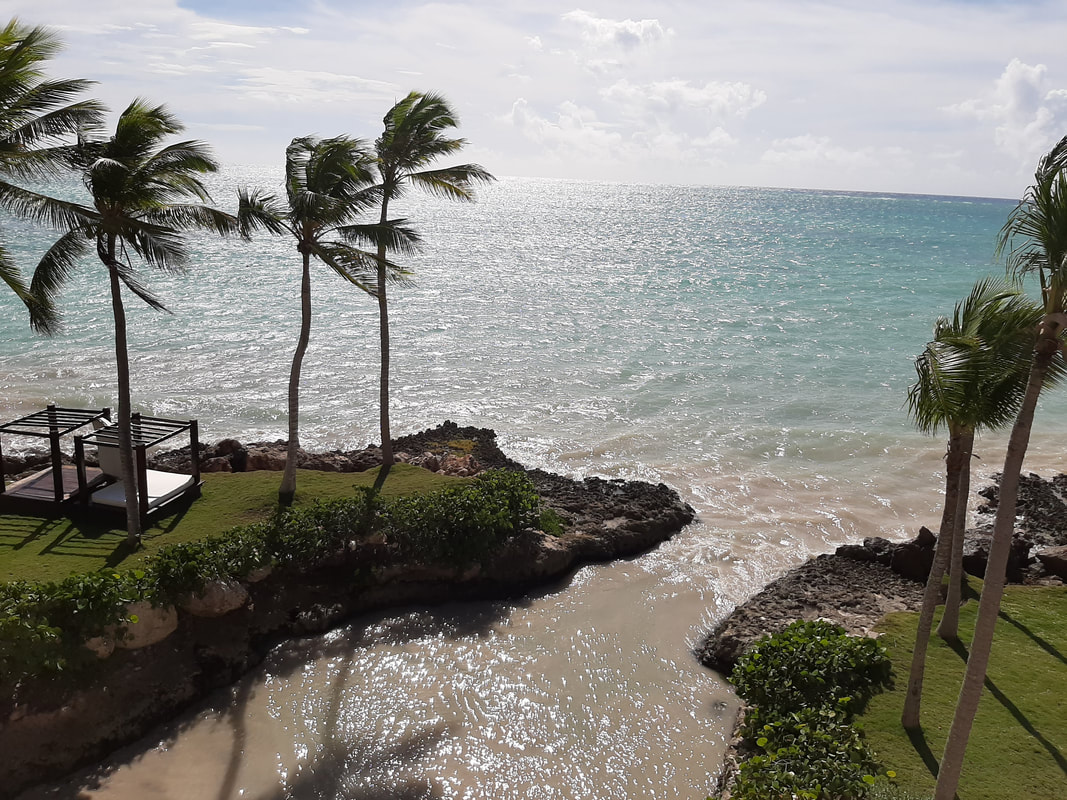
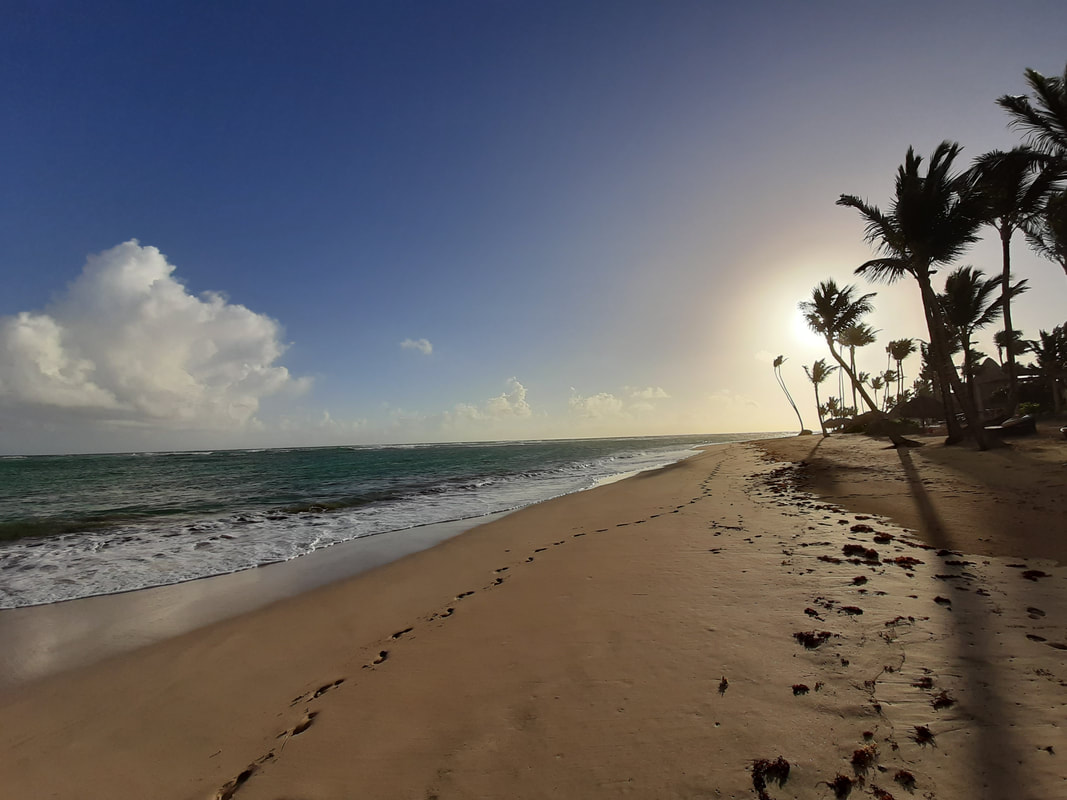
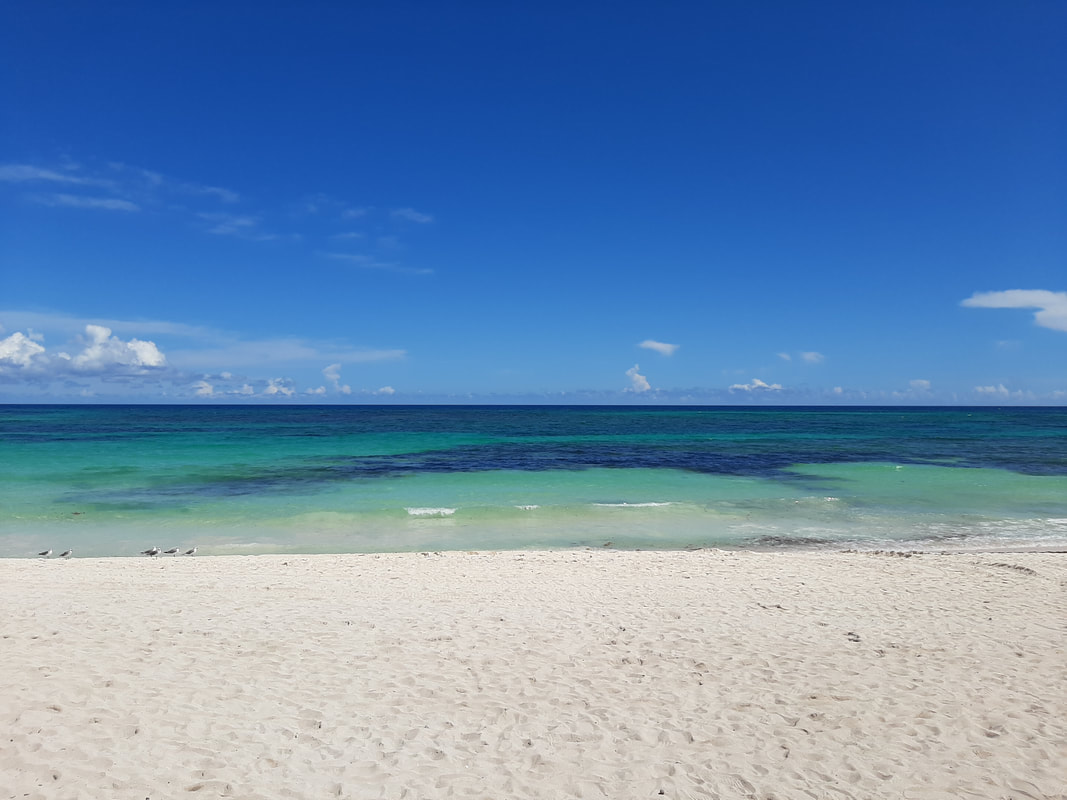
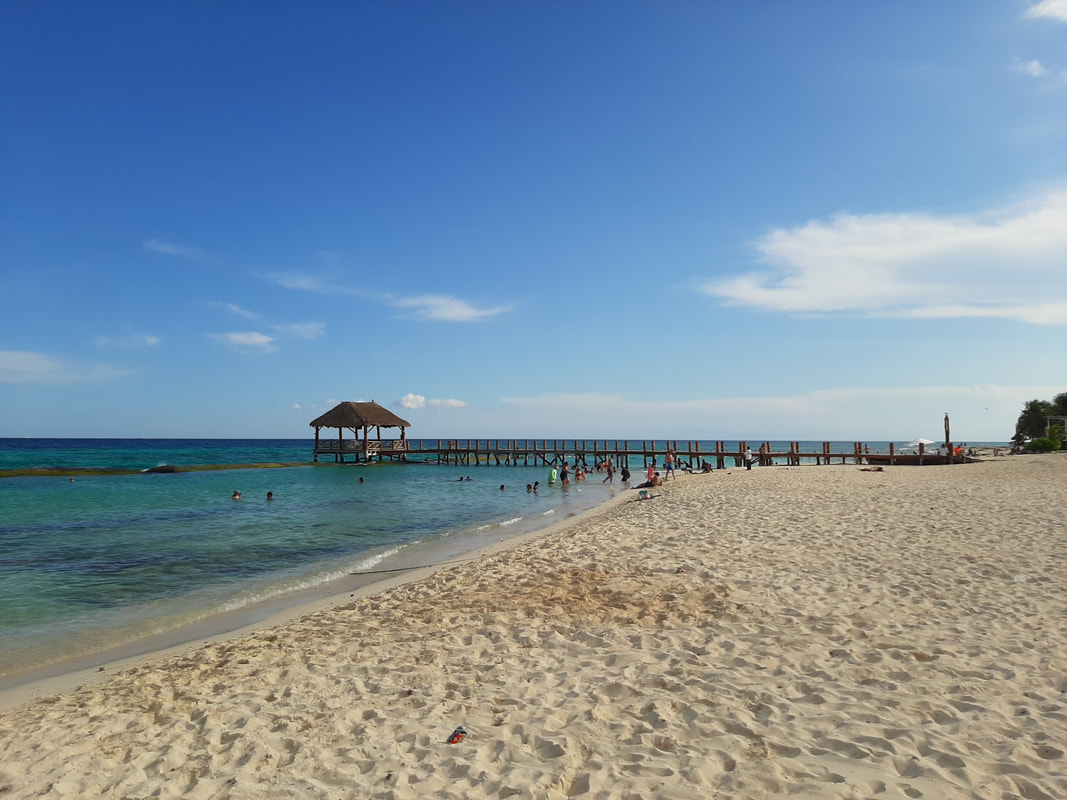
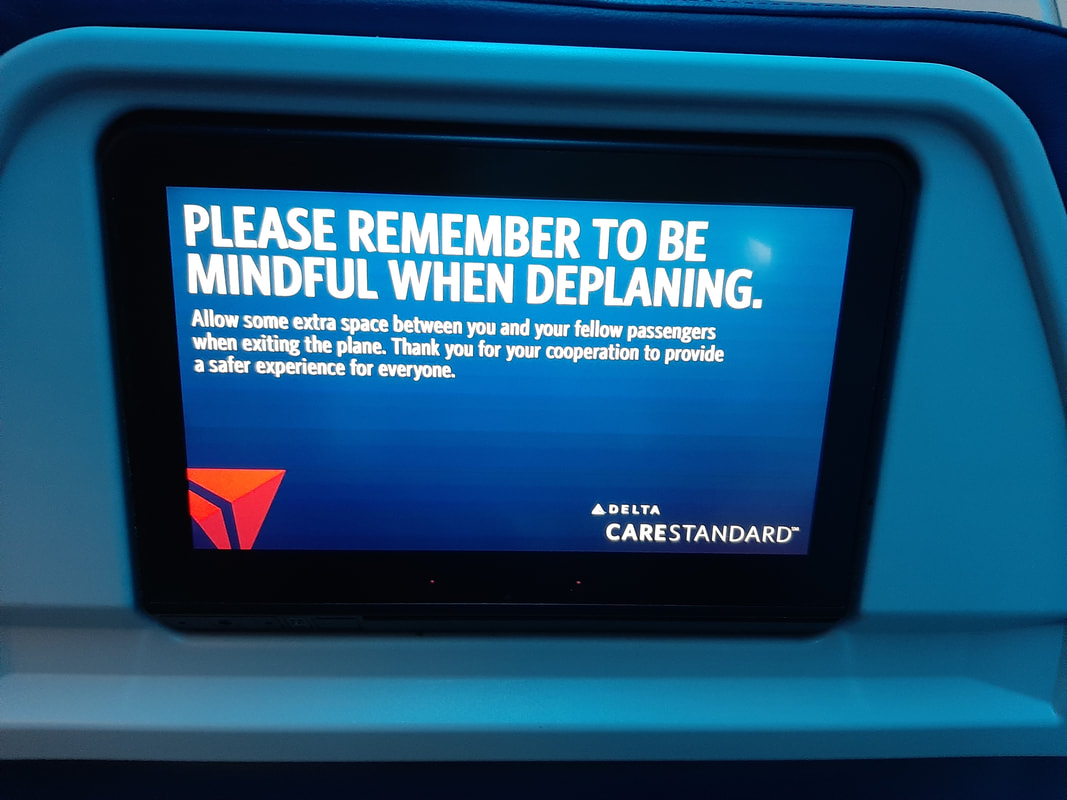
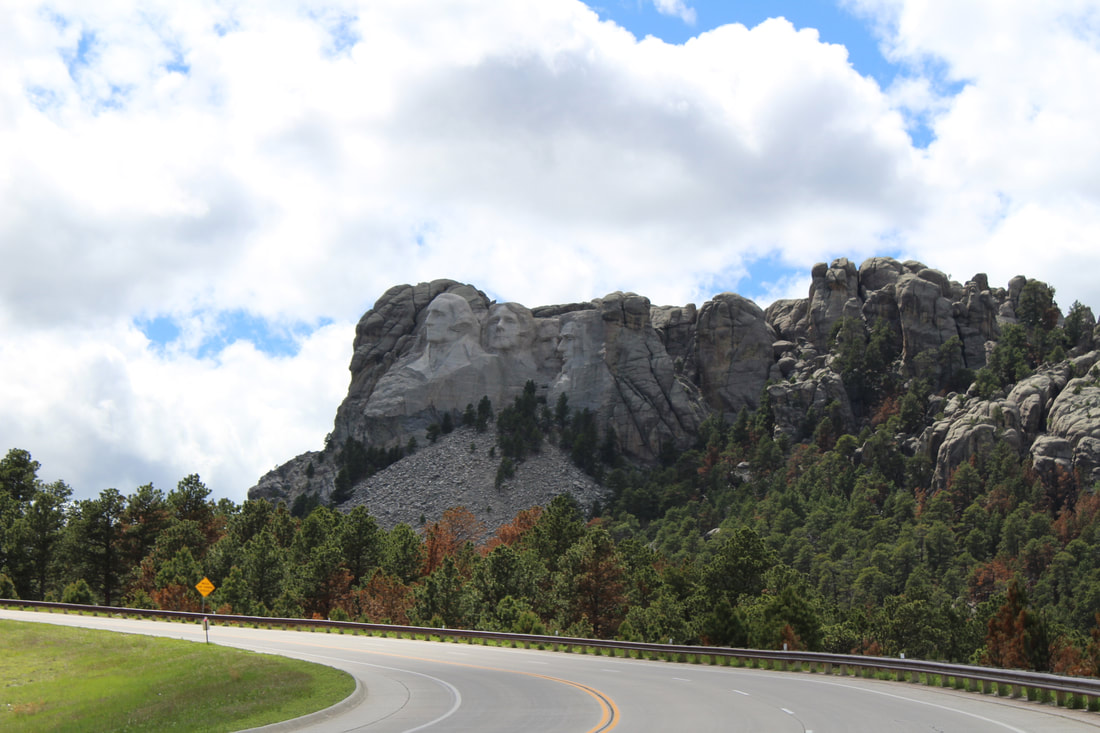
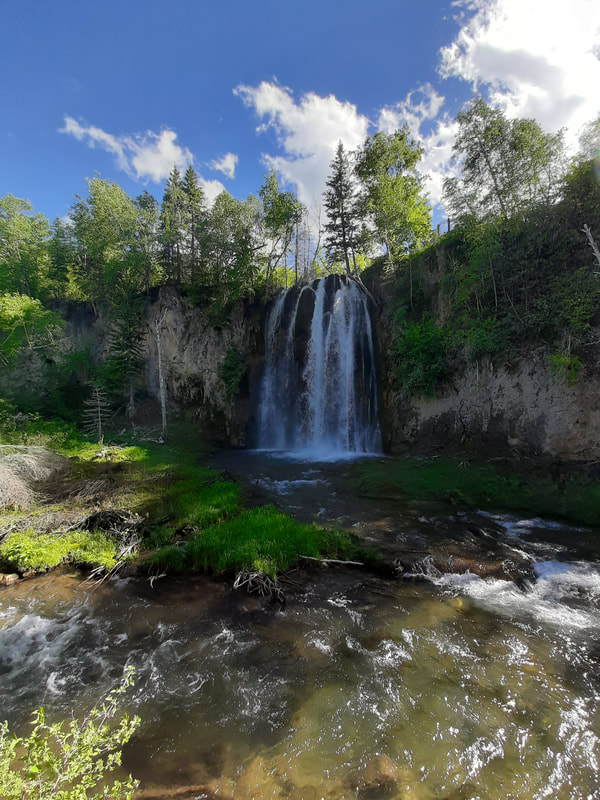
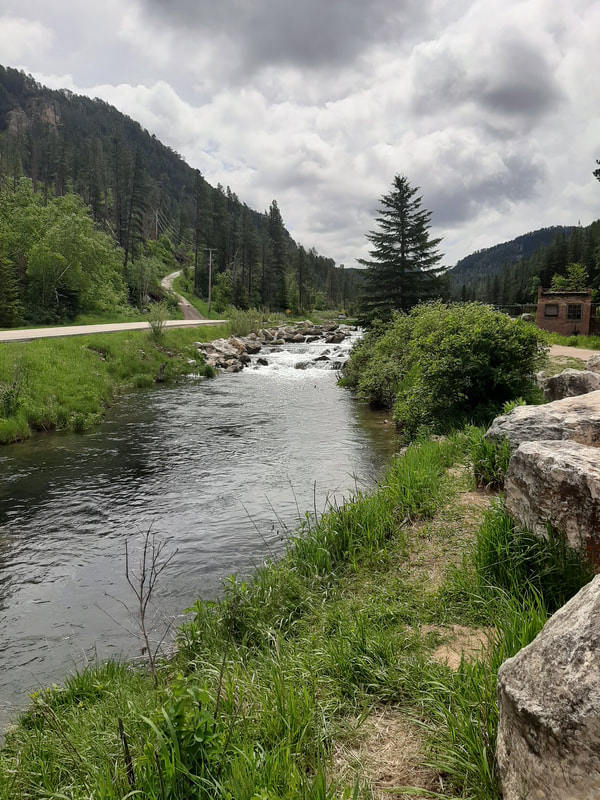
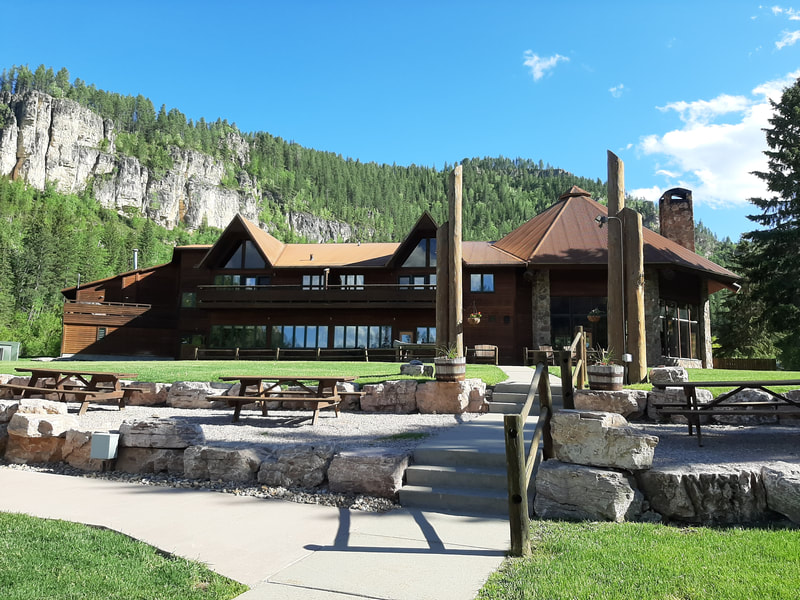
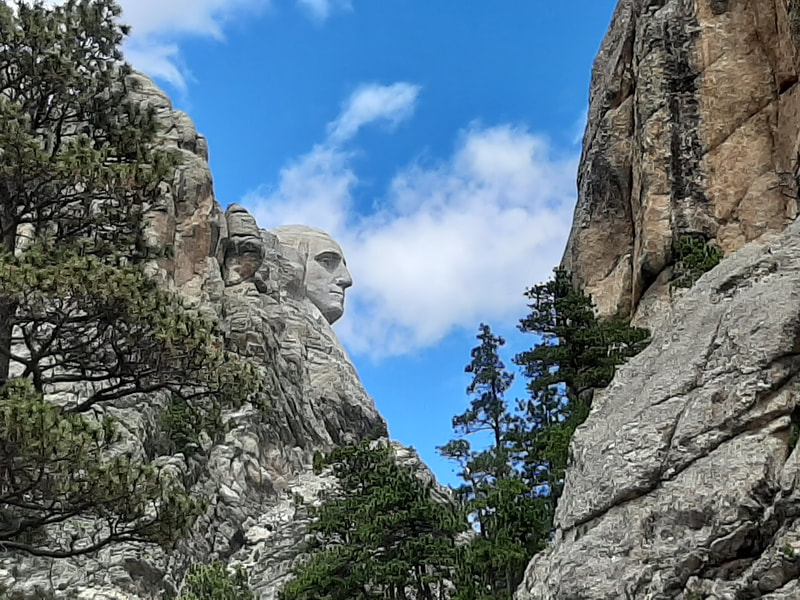
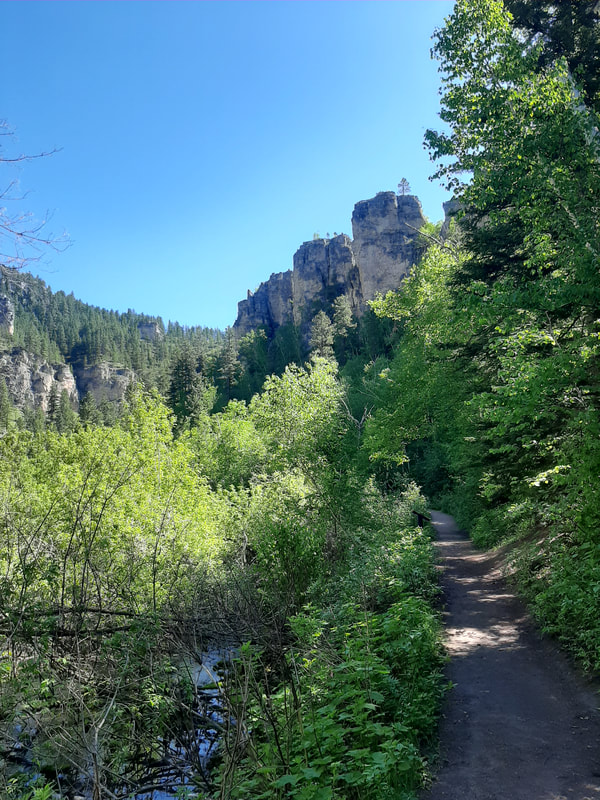
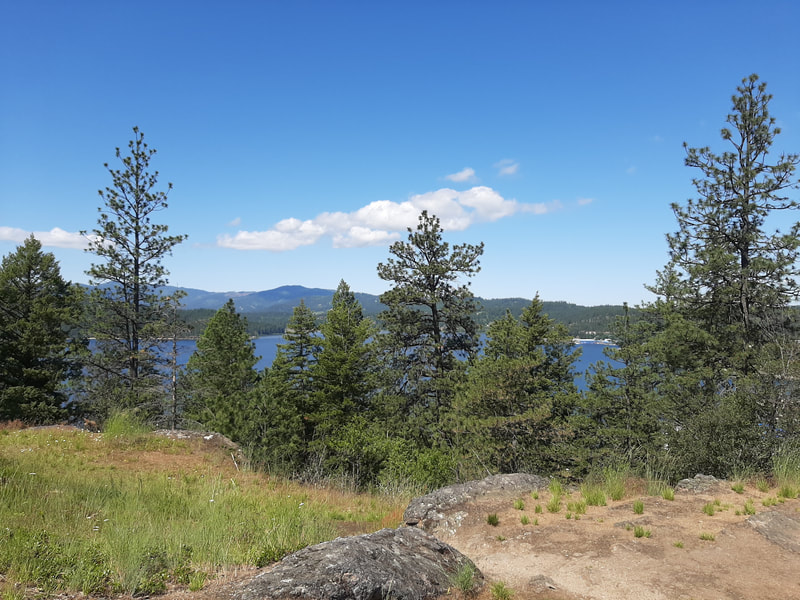
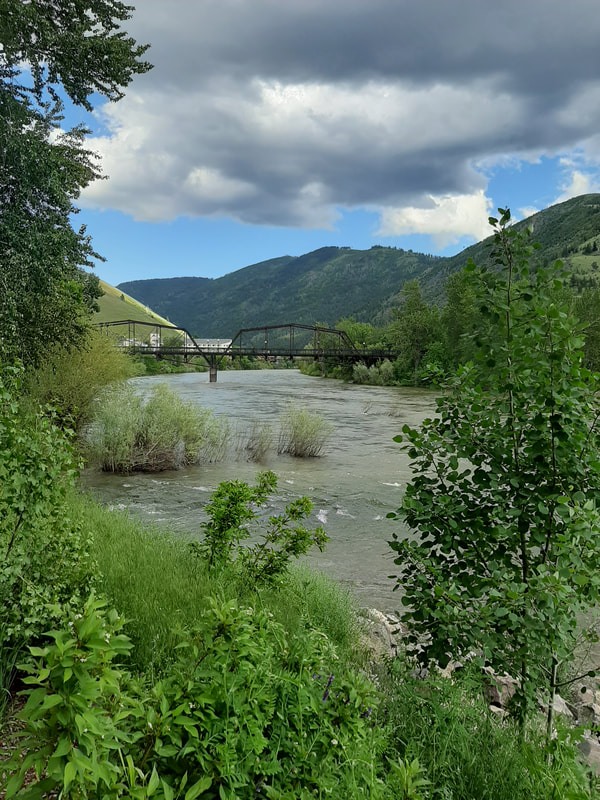
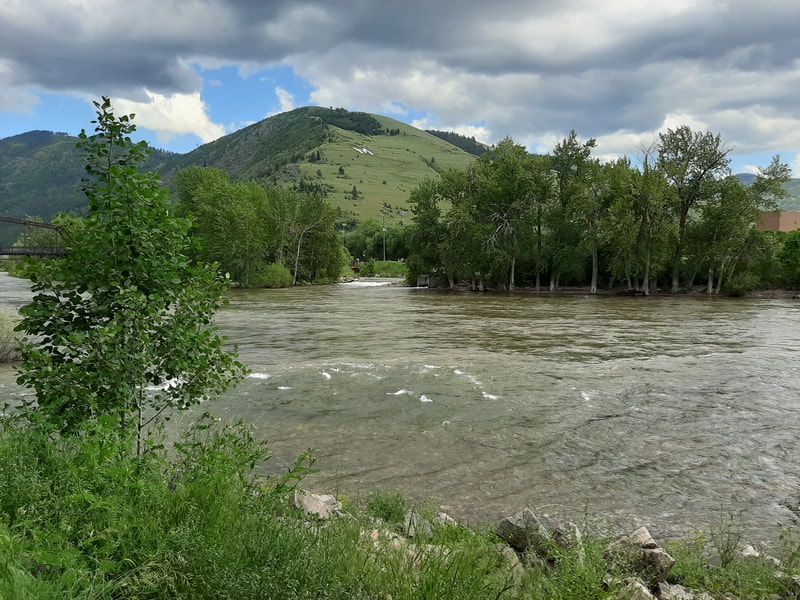
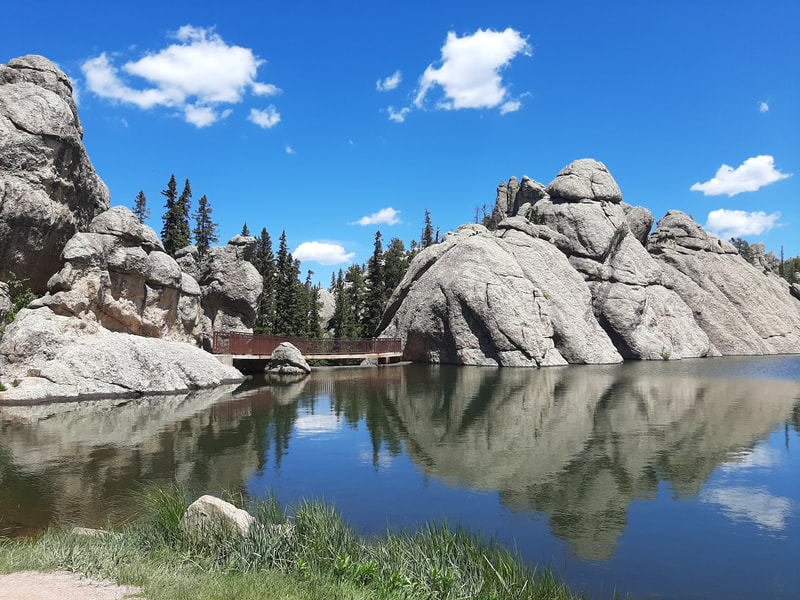
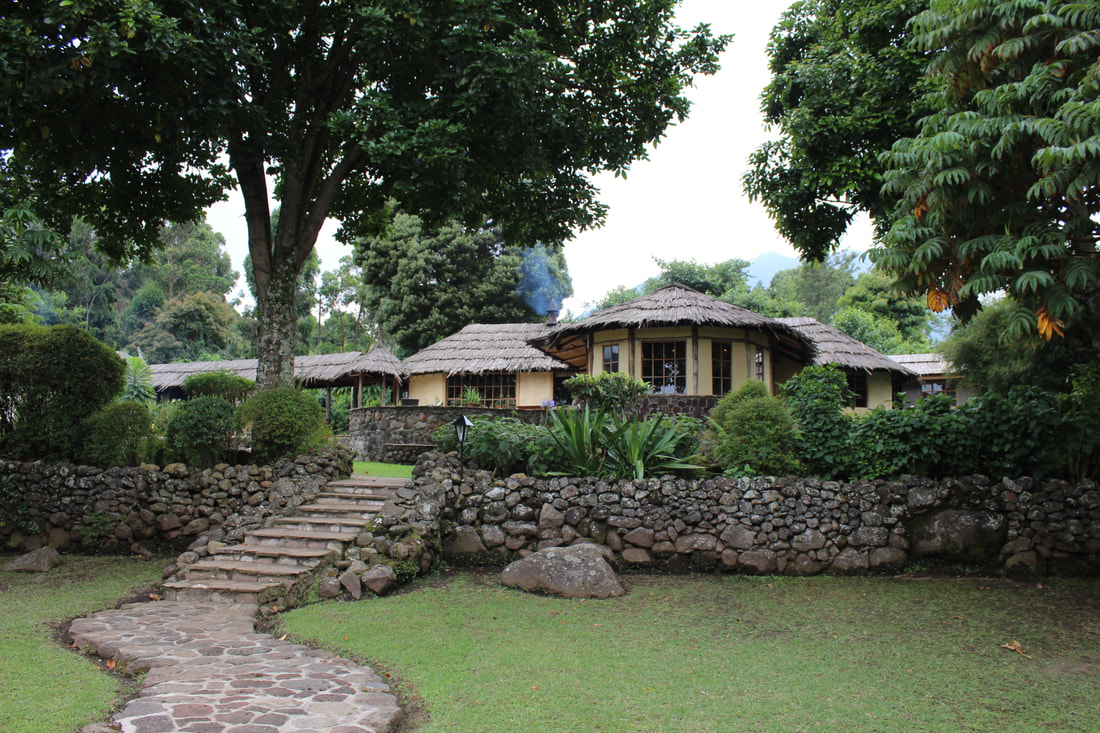
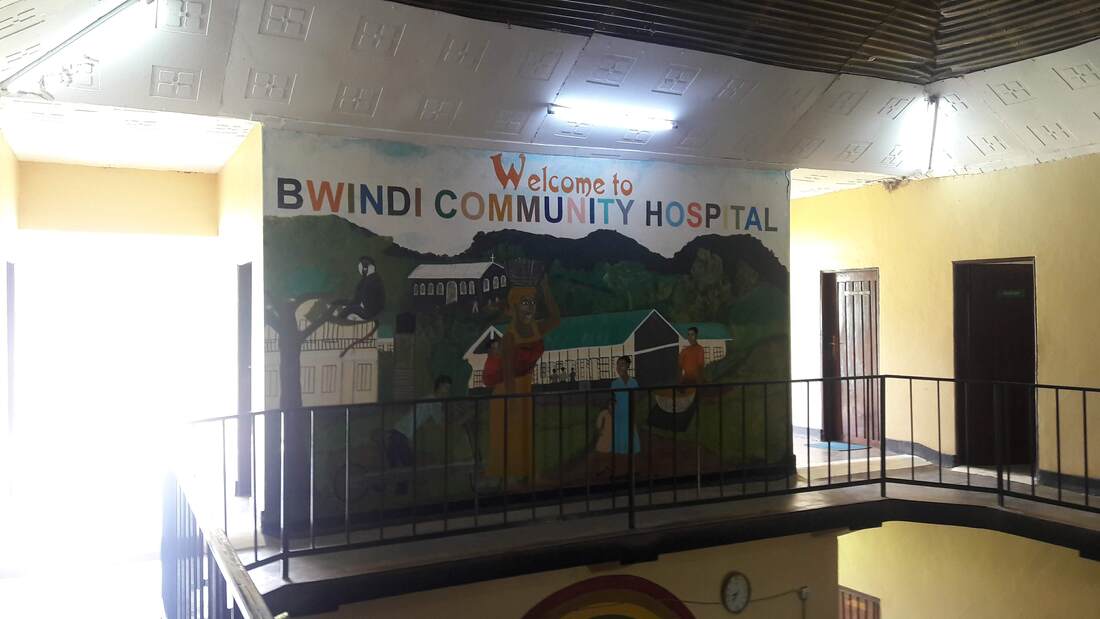
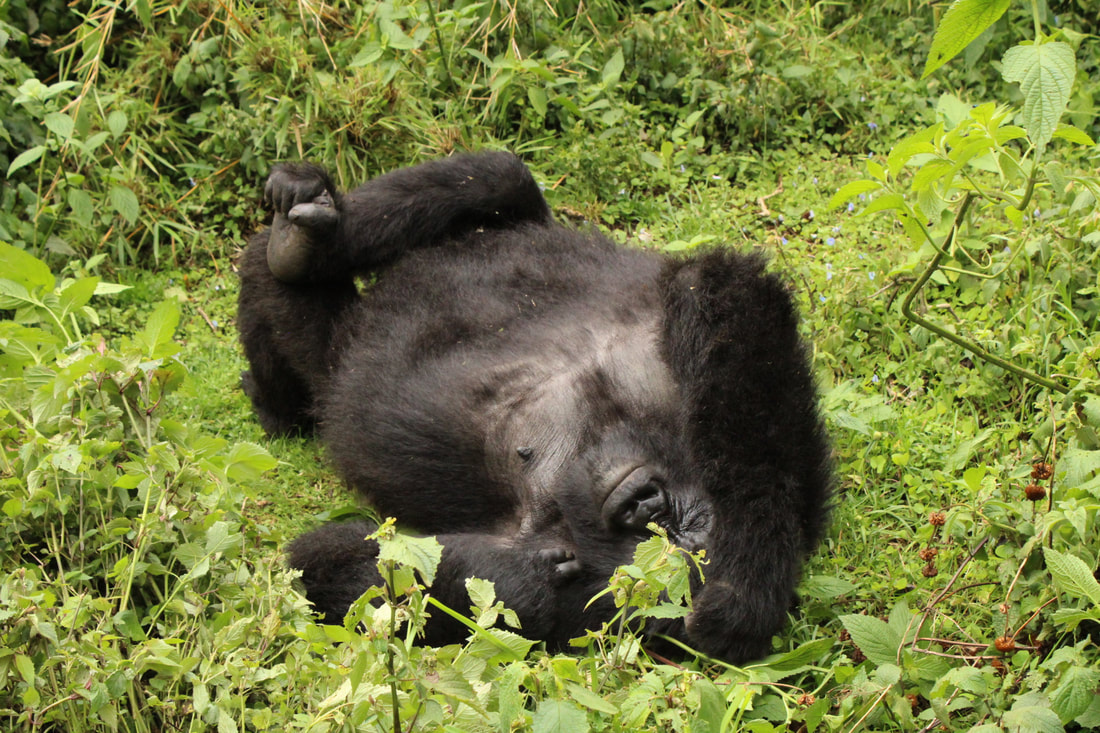
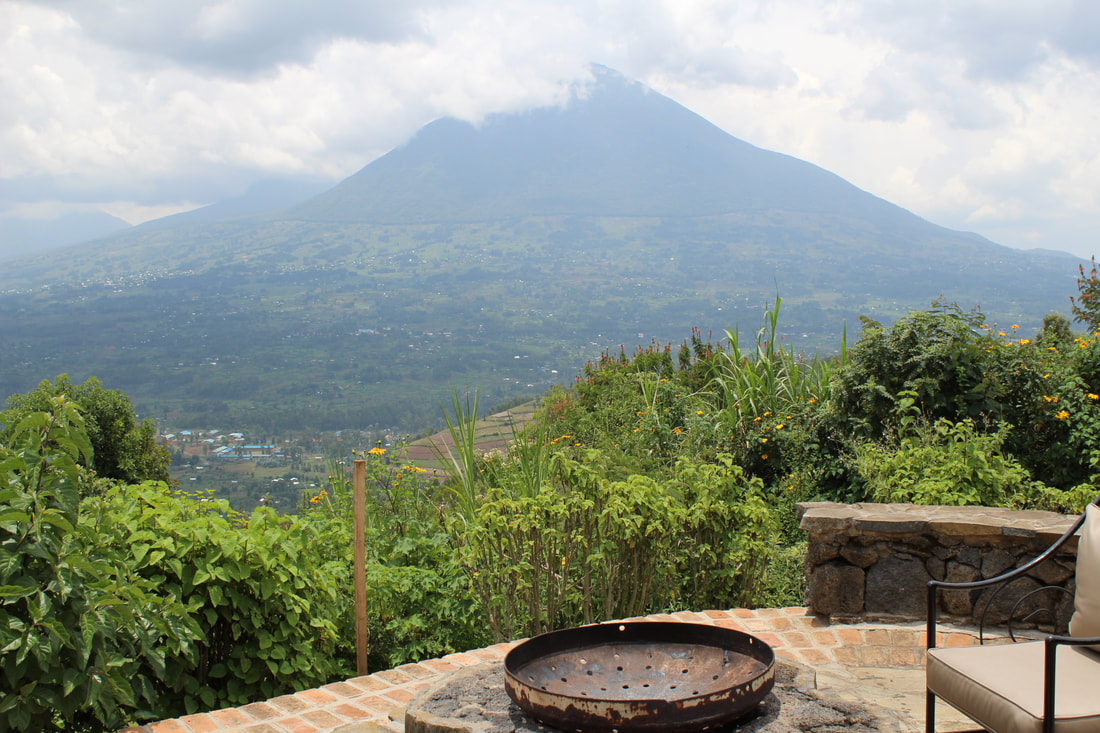
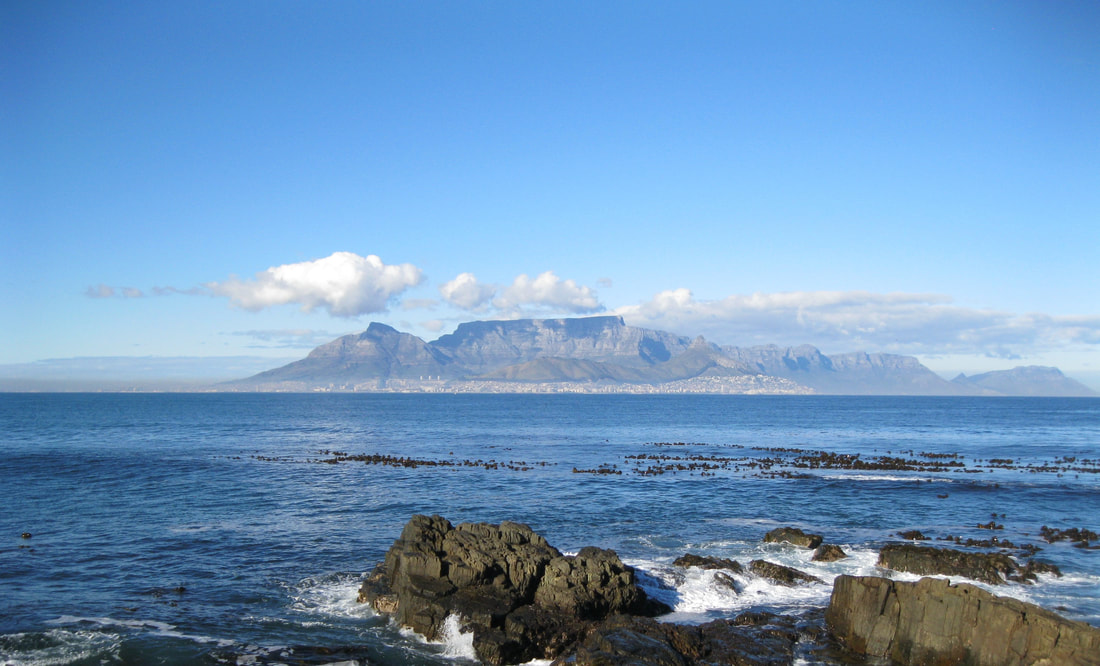
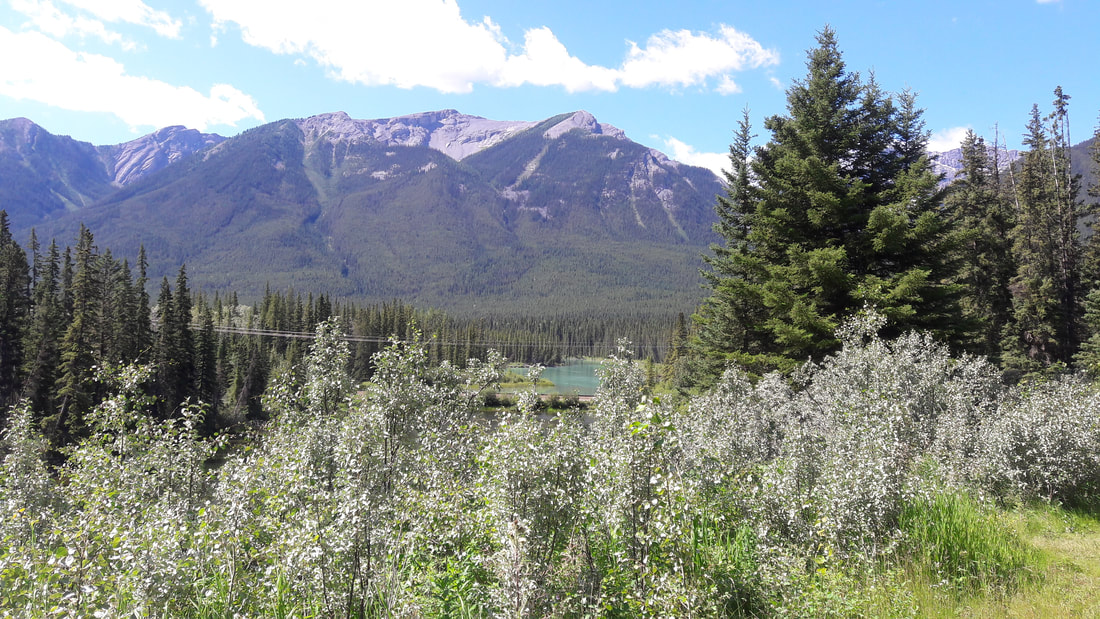
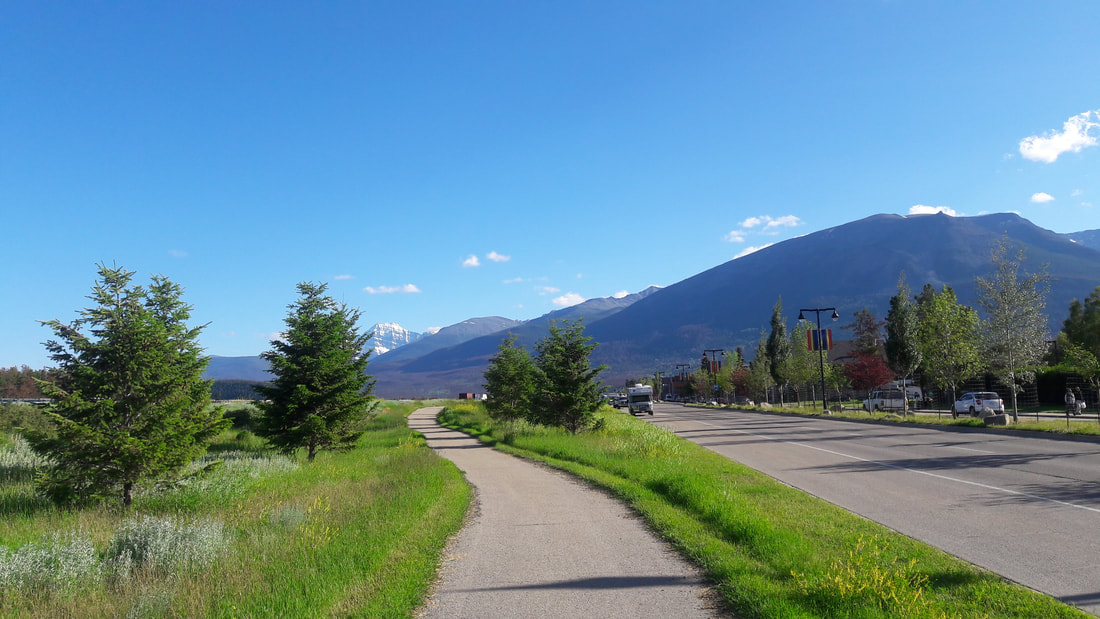
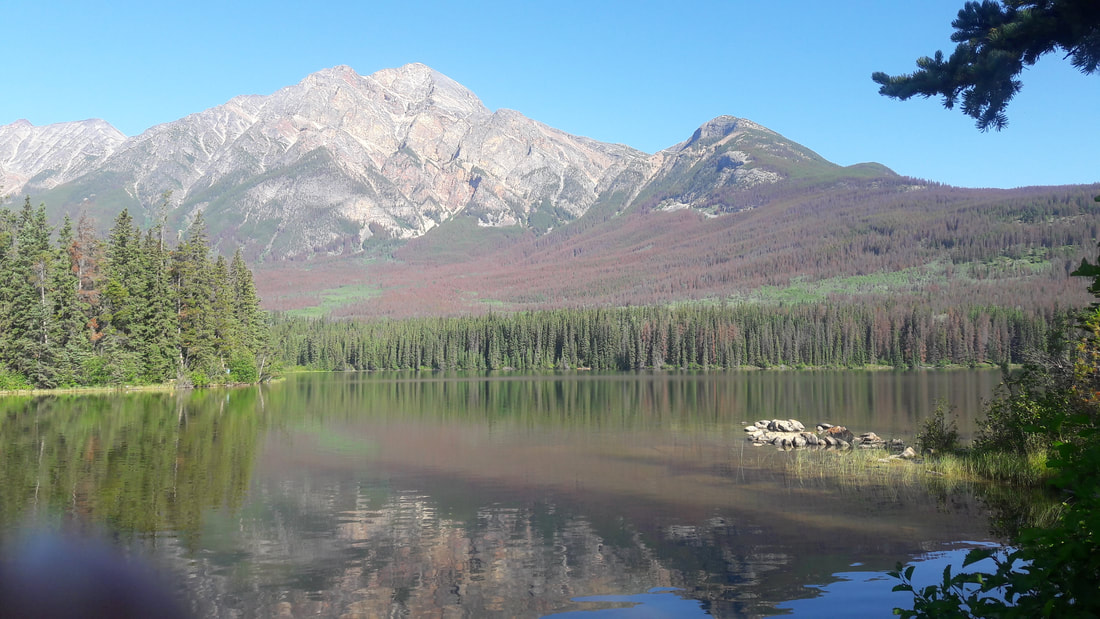
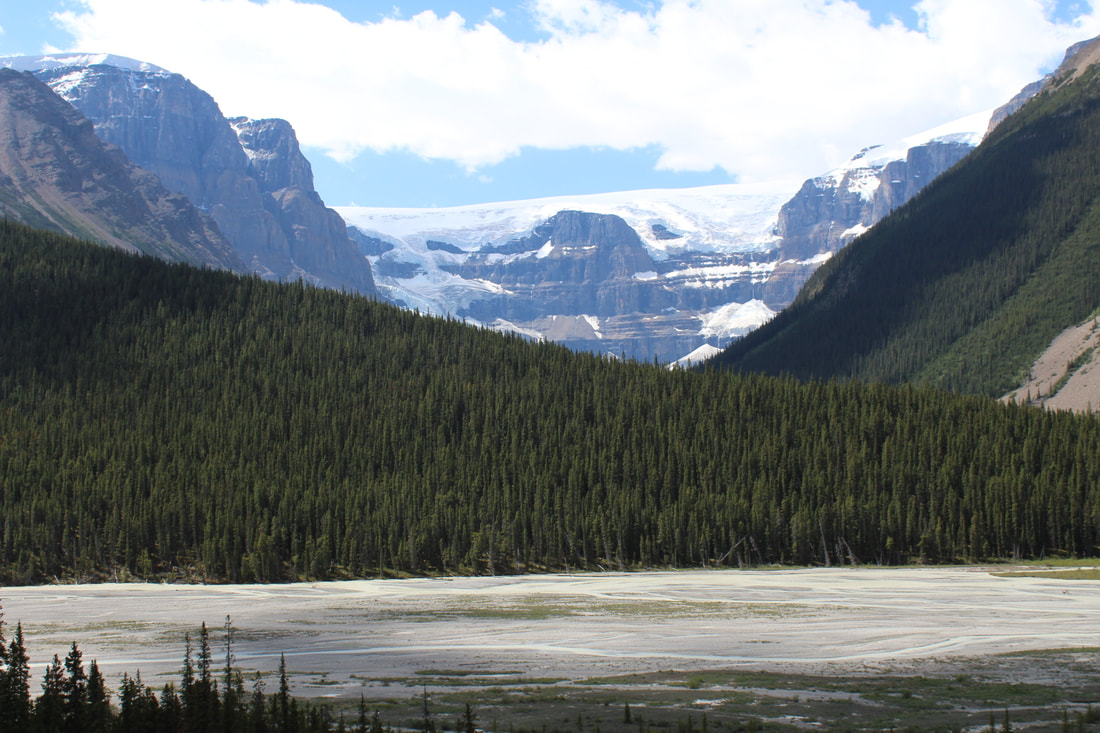
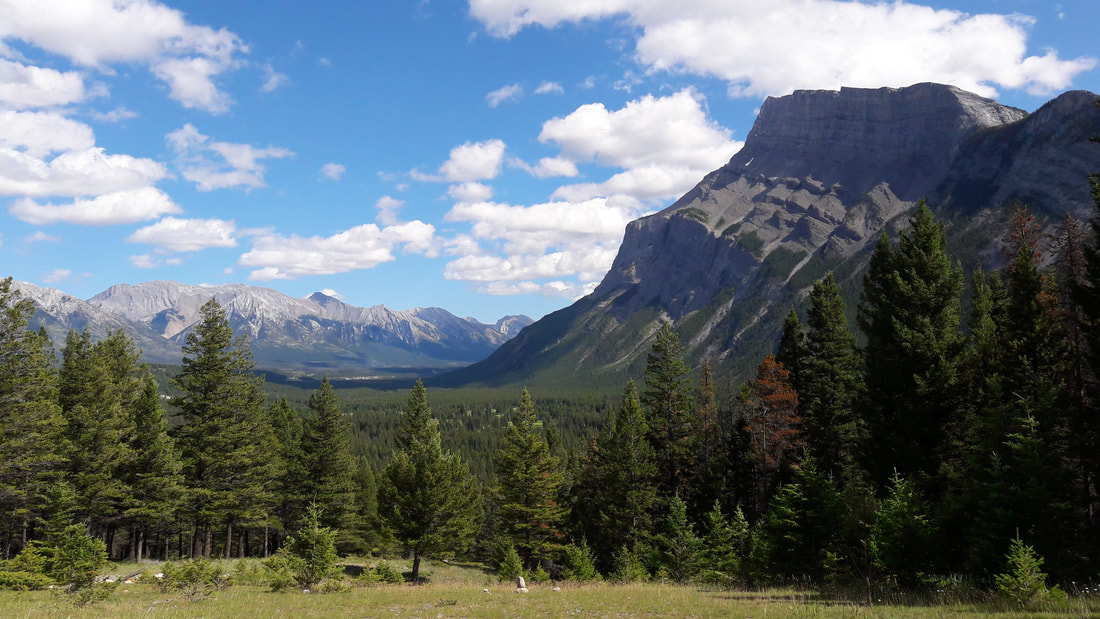
 RSS Feed
RSS Feed